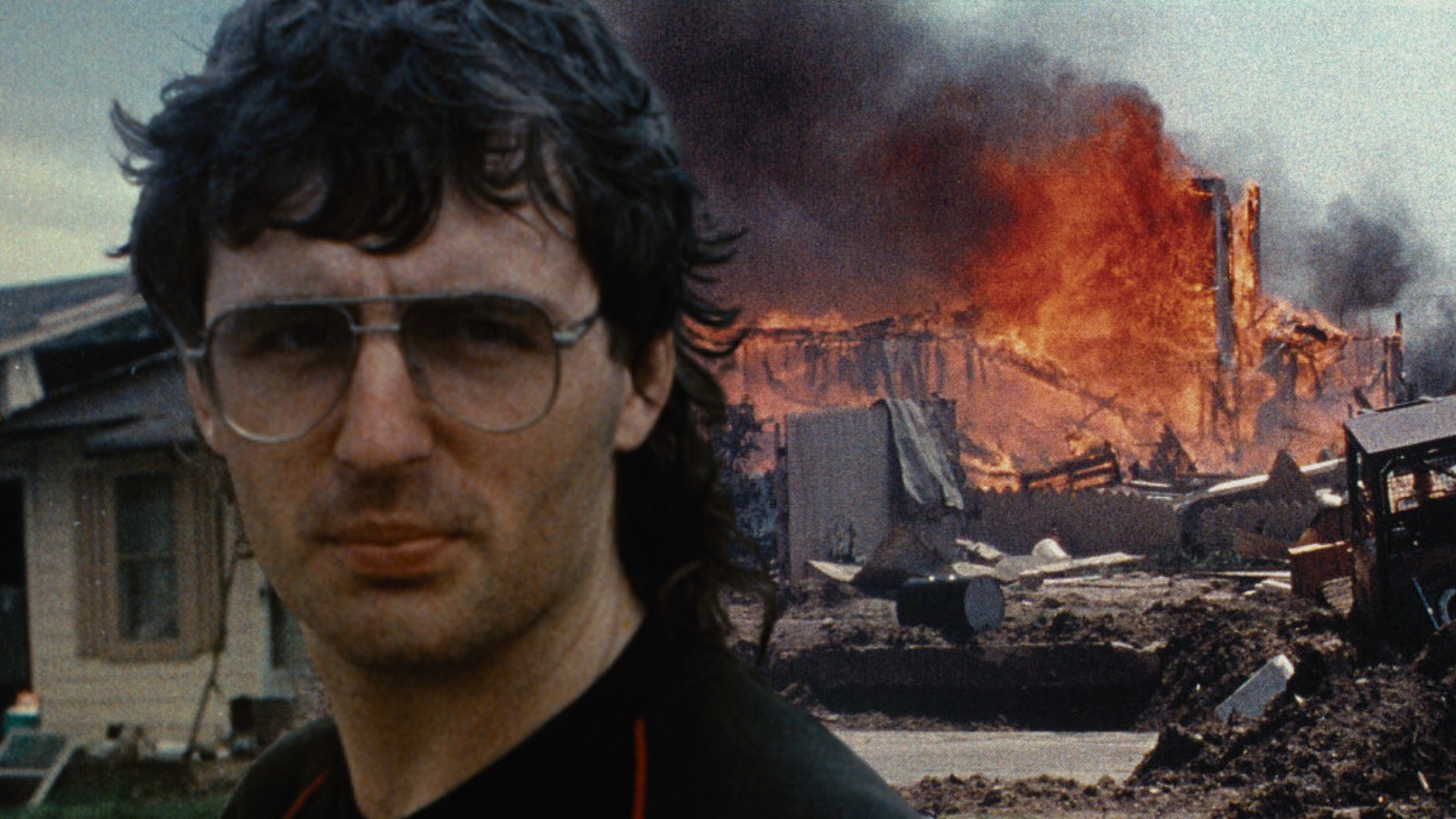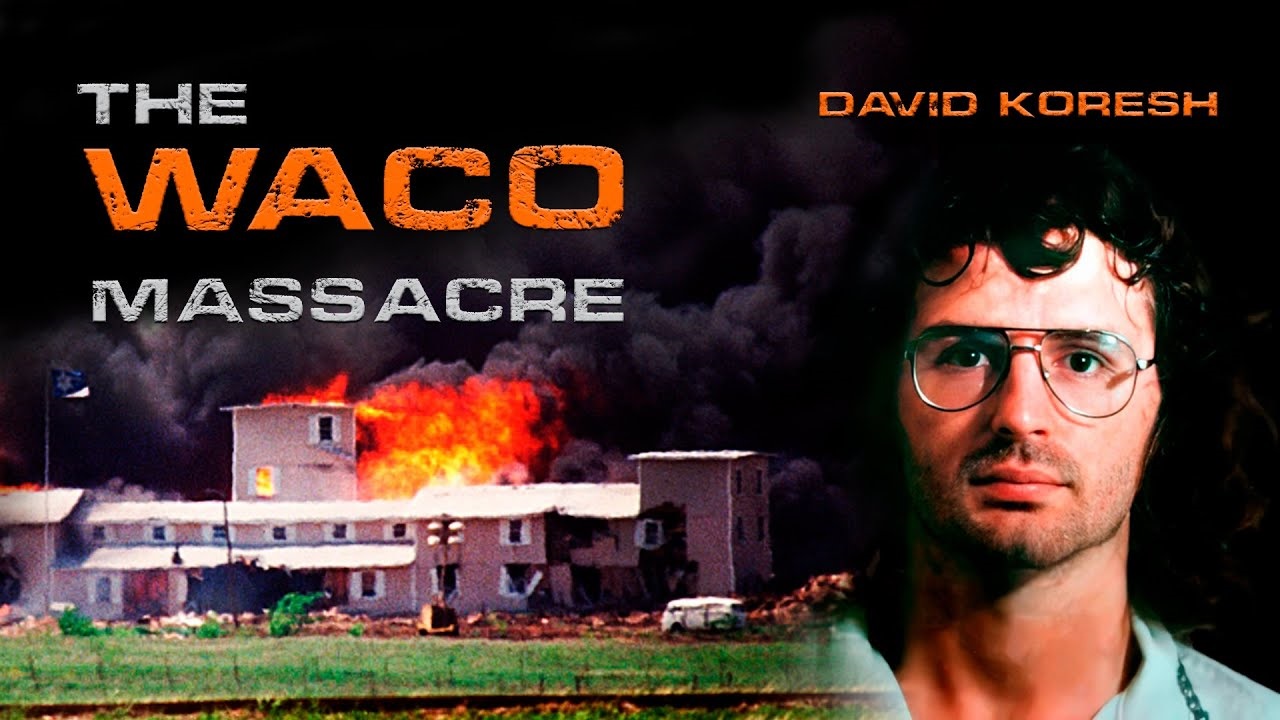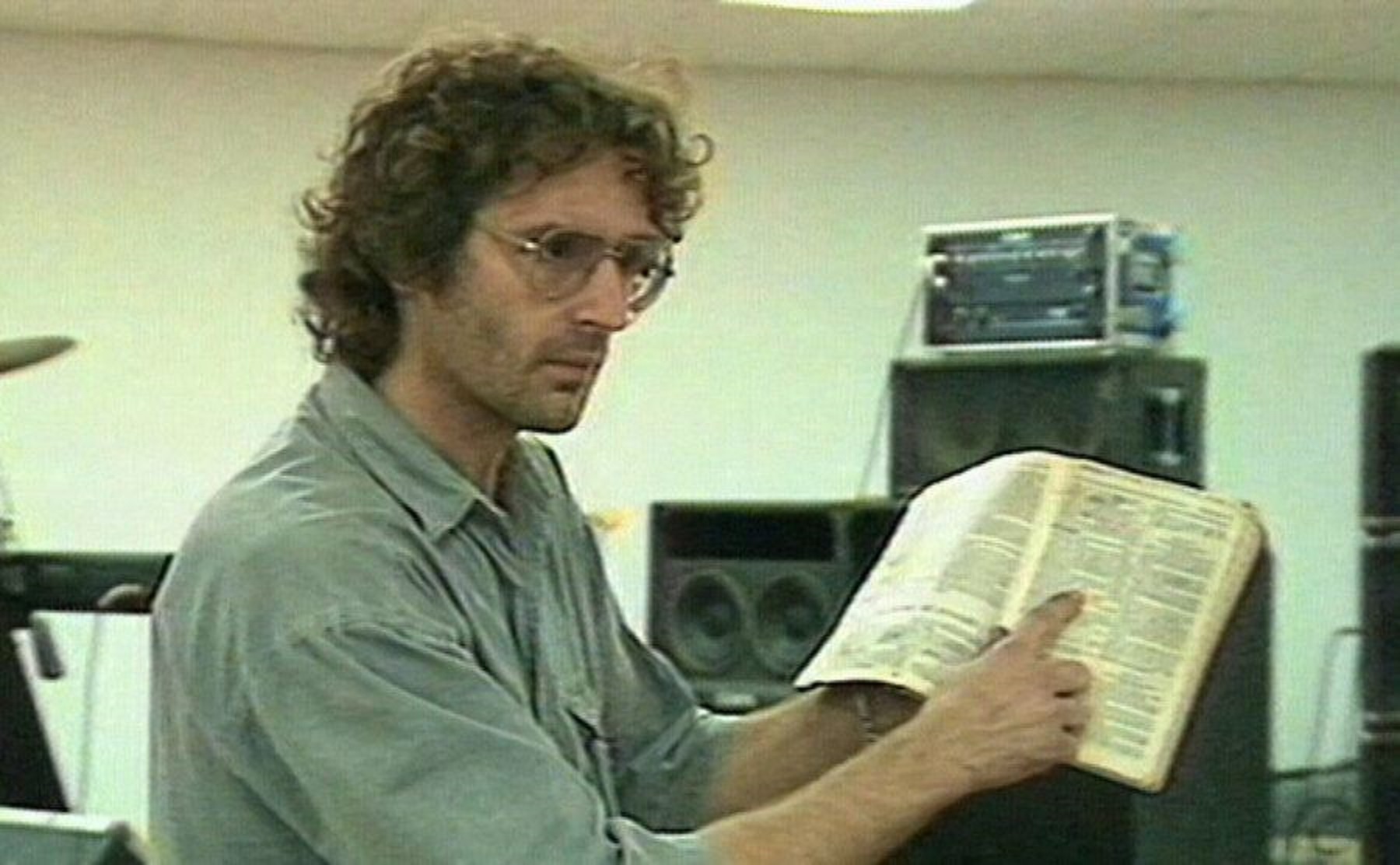Warning: Graphic content, readers’ discretion advised. This article contains a recollection of crime and can be triggering to some, readers’ discretion advised.
The Waco siege, also known as the Waco massacre,was a siege by the U.S. federal government and Texas state law enforcement of a compound belonging to the religious cult known as the Branch Davidians between February 28 and April 19, 1993.The Branch Davidians, led by David Koresh, were headquartered at Mount Carmel Center ranch in the community of Axtell, Texas,13 miles (21 kilometers) northeast of Waco. Suspecting the group of stockpiling illegal weapons, the Bureau of Alcohol, Tobacco, and Firearms (ATF) obtained a search warrant for the compound and arrest warrants for Koresh and a select few of the group’s members.
The ATF had intended a sudden daylight raid of the ranch in order to serve a search and arrest warrant, with the element of surprise meant to allow for the quick control of the situation, reducing the risk to all parties that would be associated with the large cache of modified weapons and explosive devices that the Davidians had available. Any advantage of surprise was lost when a KWTX-TV reporter who had been tipped off about the raid asked for directions from a U.S. Postal Service mail carrier who was coincidentally Koresh’s brother-in-law.
Thus, the group’s members were fully armed and prepared; an intense gunfight erupted, resulting in the deaths of four ATF agents and six Branch Davidians. Upon the ATF’s entering of the property and failure to execute the search warrant, a siege was initiated by the Federal Bureau of Investigation (FBI), during which negotiations between the parties attempted to reach a compromise. After 51 days, on April 19, 1993, the FBI launched a tear gas attack in an attempt to force the Branch Davidians out of the compound’s buildings. Shortly thereafter, the Mount Carmel Center became engulfed in flames. The fire resulted in
the deaths of 76 Branch Davidians, including 25 children, two pregnant women, and David Koresh.In total, the 51-day siege resulted in the deaths of four federal agents and 82 Branch Davidians, 28 of whom were children.

The events of the siege and attack, particularly the origin of the fire, are disputed by various sources. Department of Justice reports from October 1993 and July 2000 conclude that although incendiary tear gas canisters were used by the FBI, the Branch Davidians had started the fire, citing evidence from audio surveillance recordings of very specific discussions between Koresh and others about pouring more fuel on piles of hay as the fires started, and from aerial footage showing at least three simultaneous ignition points at different locations in the building complex.
The FBI contends that none of their agents fired any live rounds on the day of the fire. Critics contend that live rounds were indeed fired by law enforcement, and suggest that a combination of gunshots and flammable tear gas was the true cause of the fire.
The Waco siege was cited by Timothy McVeigh as the main reason for his and Terry Nichols ‘s plan to execute the Oklahoma City bombing exactly two years later, on April 19, 1995, as well as the modern-day American militia movement and a rise in opposition to firearm regulation.
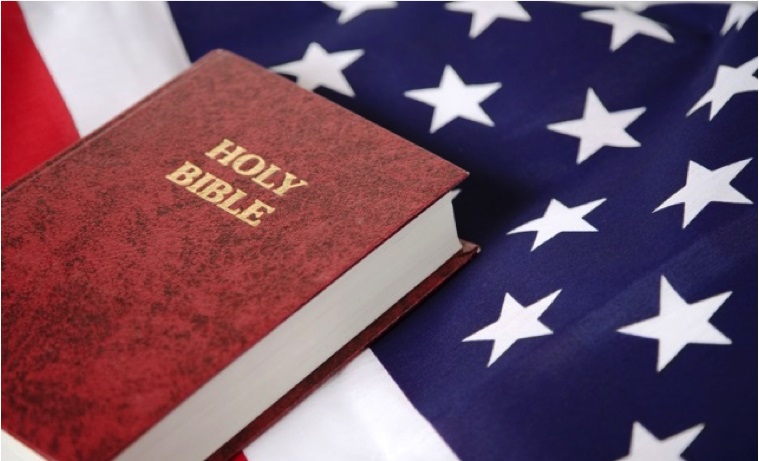
The Branch Davidians (also known as “The Branch”) were a religious group that originated in 1955 from a schism in the Shepherd’s Rod (Davidians) following the death of the Shepherd’s Rod founder Victor Houteff.Houteff founded the Davidians based on his prophecy of an imminent apocalypse involving the Second Coming of Jesus Christ and the defeat of the evil armies of Babylon.As the original Davidian group gained members, its leadership moved the church to a hilltop several miles east of Waco, Texas, which they named Mount Carmel, after a mountain in Israel mentioned in Joshua 19:26 in the Bible’s Old Testament.
A few years later, they moved again to a much larger site east of the city. In 1959, Victor’s widow, Florence Houteff, announced that the expected Armageddon was about to take place, and members were told to gather at the center to await this event. Many of them built houses, others stayed in tents, trucks, or buses, and most of them sold their possessions
Following the failure of this prophecy, control of the site (Mount Carmel Center) fell to Benjamin Roden, founder of the Branch Davidian Seventh-day Adventist Association (Branch Davidians). He promoted different doctrinal beliefs than those of Victor Houteff’s original Davidian Seventh-day Adventist organization. On Roden’s death, control of the Branch Davidians fell to his wife, Lois Roden. Lois considered their son, George Roden, unfit to assume the position of prophet. Instead, she groomed Vernon Wayne Howell (later known as David Koresh) to be her successor.

Only 9 people left the compound after the fires began./Credit: Dallas Morning News
In 1984, a meeting led to a division of the group, with Howell leading one faction (calling themselves the Branch Davidians) and George Roden leading the competing faction. After this split, George Roden ran Howell and his followers off Mount Carmel at gunpoint. Howell and his group relocated to Palestine, Texas.
After the death of Lois Roden in November 1986 and probate of her estate in January 1987, Howell attempted to gain control of Mount Carmel Center by force.George Roden had dug up the casket of Anna Hughes from the Davidian cemetery and had challenged Howell to a resurrection contest to prove who was the rightful heir to the leadership. Howell instead went to the police and claimed Roden was guilty of corpse abuse, but the county prosecutors refused to file charges without proof
On November 3, 1987, Howell and seven armed companions tried to get into the Mount Carmel chapel, intending to photograph the body in the casket as incriminating evidence. Roden was informed of the interlopers and opened fire. The Sheriff’s Department responded about 20 minutes into the gunfight, during which Roden had been wounded. Sheriff Harwell got Howell on the phone and told him to stop shooting and surrender. Howell and his companions, dubbed the “Rodenville Eight” by the media, were tried for attempted murder on April 12, 1988. Seven were acquitted, and the jury hung on Howell’s verdict. The county prosecutors did not press the case further.
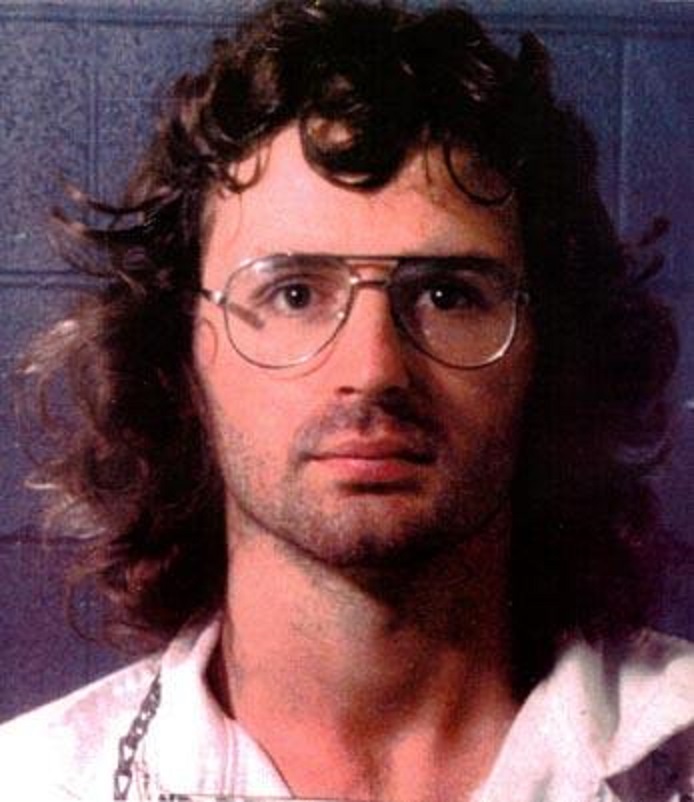
Vernon howell ( later David koresh in a mug shot.
While waiting for the trial, Roden was put in jail under contempt of court charges because of his use of foul language[in some court pleadings. He threatened the Texas court with sexually transmitted diseases if the court ruled in Howell’s favor. Alongside these charges, Roden was jailed for six months for legal motions he filed with explicit language. Roden faced 90 days in jail for living on the property after being ordered to neither live on the property nor call himself the leader of the religious group in a 1979 case.The next day, Perry Jones and several of Howell’s other followers moved from their headquarters in Palestine, Texas, to Mount Carmel.(citation needed)
In mid-1989, Roden used an axe to kill a Davidian named Wayman Dale Adair, who visited him to discuss Adair’s alleged vision of being God’s chosen messiah. He was found guilty under an insanity defense and was committed to a mental hospital. Shortly after Roden’s commitment, Howell raised money to pay off all the back taxes on Mount Carmel owed by Roden and took legal control of the property.After these legal proceedings, it was noted in a 90-minute interview by the Davidians’ attorney Douglas Wayne Martin that the religious group had been back and forth to court since 1955
On August 5, 1989, Howell released the “New Light” audiotape, in which he said that God told him to procreate with the women in the group to establish a “House of David” of his “special people.” This involved separating married couples in the group, who had to agree that only he could have sexual relations with the wives, while the men should observe celibacy.Howell also said that God had told him to start building an “Army for God” to prepare for the end of days and a salvation for his followers.
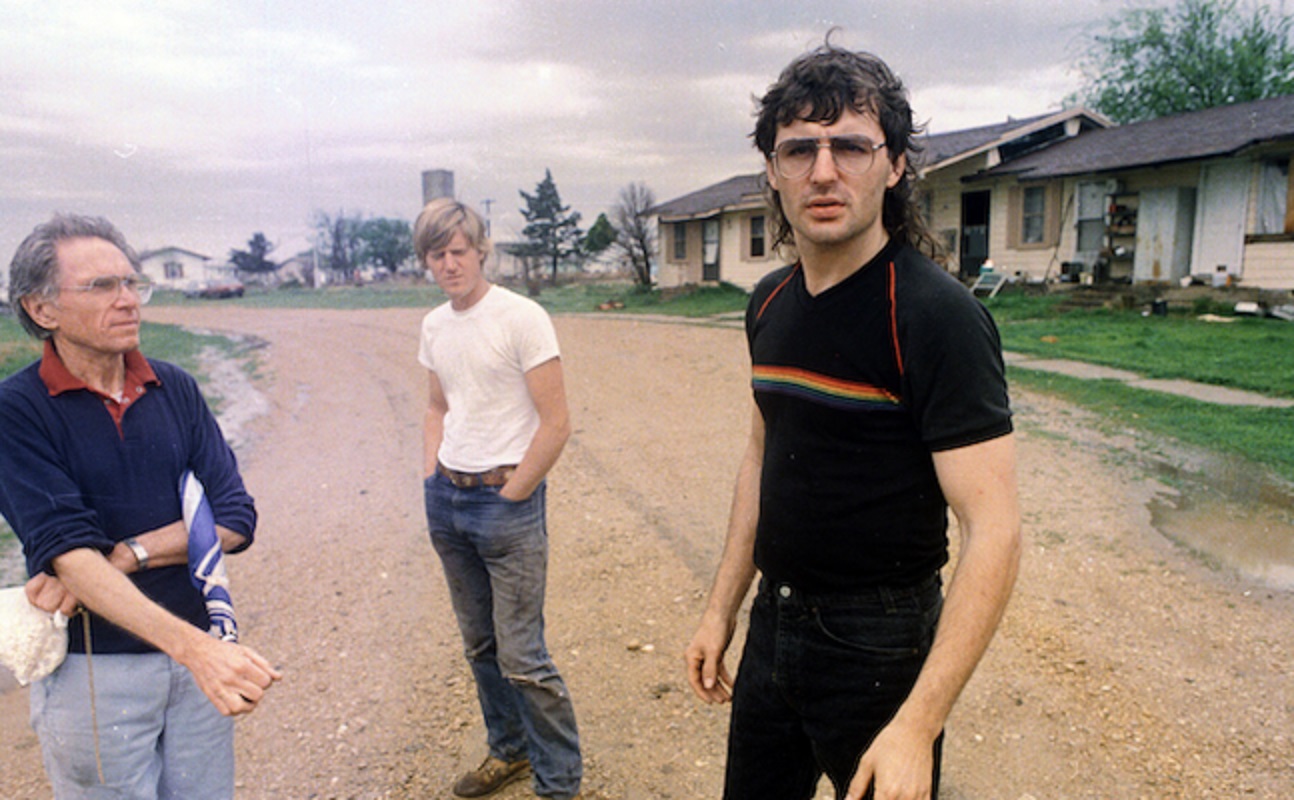
David koresh ( right) perry jones (left) an david jones( middle) at the coumpound prior to the siege .
Howell filed a petition in the California State Superior Court in Pomona on May 15, 1990, to legally change his name “for publicity and business purposes” to David Koresh. On August 28, he was granted the petition.By 1992, most of the land belonging to the group had been sold except for a core 77 acres (31 ha). Most of the buildings had been removed or were being salvaged for construction materials to convert much of the main chapel and a tall water tank into apartments for the resident members of the group. Many of the members of the group had been involved with the Davidians for a few generations, and many had large families
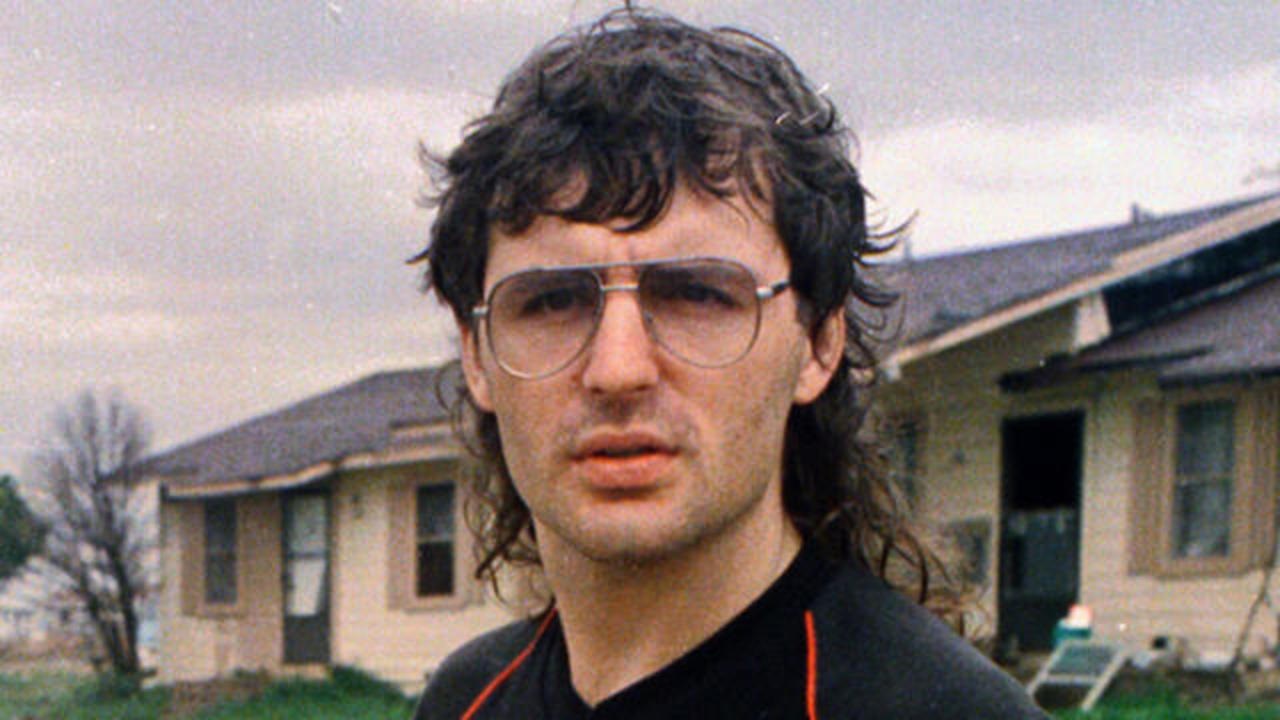
On February 27, 1993, the Waco Tribune-Herald began publishing “The Sinful Messiah”, a series of articles by Mark England and Darlene McCormick, who reported allegations that Koresh had physically abused children in the compound and had committed statutory rape by taking multiple underage brides.
Koresh was also said to advocate polygamy for himself and declared himself married to several female residents of the small community. The paper claimed that Koresh had announced he was entitled to at least 140 wives and that he was entitled to claim any of the women in the group as his, that he had fathered at least a dozen children, and that some of these mothers became brides as young as 12 or 13 years old.
In addition to allegations of sexual abuse and misconduct, Koresh and his followers were suspected of stockpiling illegal weapons. In May 1992, Chief Deputy Daniel Weyenberg of the McLennan County Sheriff’s Department called the Bureau of Alcohol, Tobacco and Firearms (ATF) to notify them that his office had been contacted by a local UPS representative concerned about a report by a local driver.
The UPS driver said a package had broken open on delivery to the Branch Davidian residence, revealing at least half a dozen grenades. He also noted that the compound had been receiving packages from an arms dealer for months.
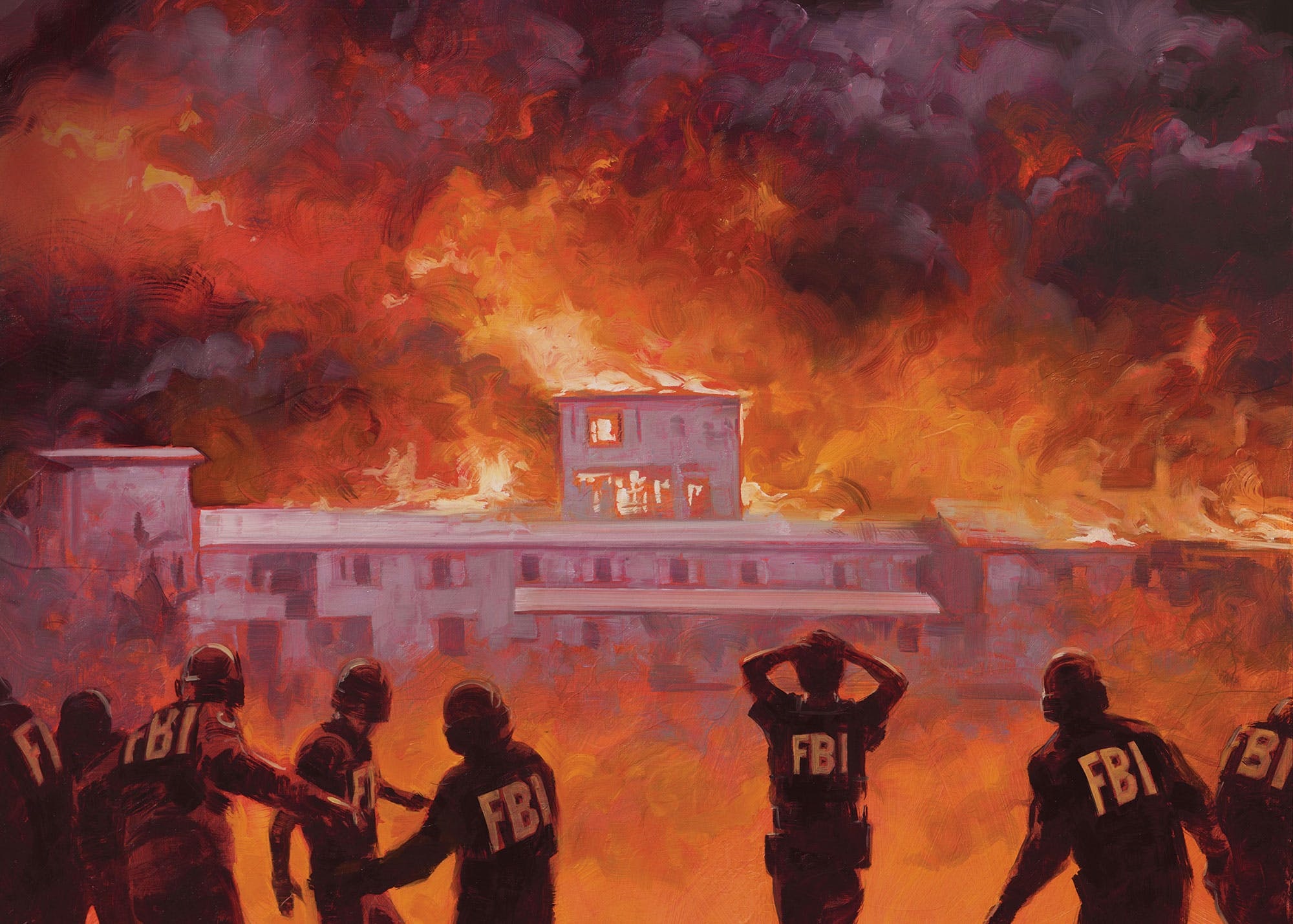
On June 9, the ATF opened a formal investigation and a week later it was classified as sensitive, “thereby calling for a high degree of oversight” from both Houston and headquarters.
The documentary Inside Waco claims that the investigation started when in 1992 the ATF became concerned over reports of automatic gunfire coming from the Carmel compound.On July 30, ATF agents David Aguilera and Skinner visited the Branch Davidians’ gun dealer Henry McMahon, who tried to get them to talk with Koresh on the phone. Koresh offered to let ATF inspect the Branch Davidians’ weapons and paperwork and asked to speak with Aguilera, but Aguilera declined.
Sheriff Harwell told reporters regarding law enforcement talking with Koresh, “Just go out and talk to them, what’s wrong with notifying them?” The ATF began surveillance from a house across the road from the compound several months before the siege.
Their cover was noticeably poor (the “college students” were in their thirties, had new cars, were not registered at the local schools, and did not keep a schedule that would have fit any legitimate employment or classes). The investigation included sending in an undercover agent, Robert Rodriguez, whose identity Koresh learned, though he chose not to reveal that fact until the day of the raid.
The ATF obtained a search warrant on suspicion that the Davidians were modifying guns to have illegal automatic fire capability. Former Branch Davidian Marc Breault claimed that Koresh had “M16 lower receiver parts”; combining M16 trigger components with a modified AR-15 lower receiver is, according to ATF regulations, “constructive possession” of an unregistered machine gun, regulated in the Firearm Owners Protection Act of 1986.
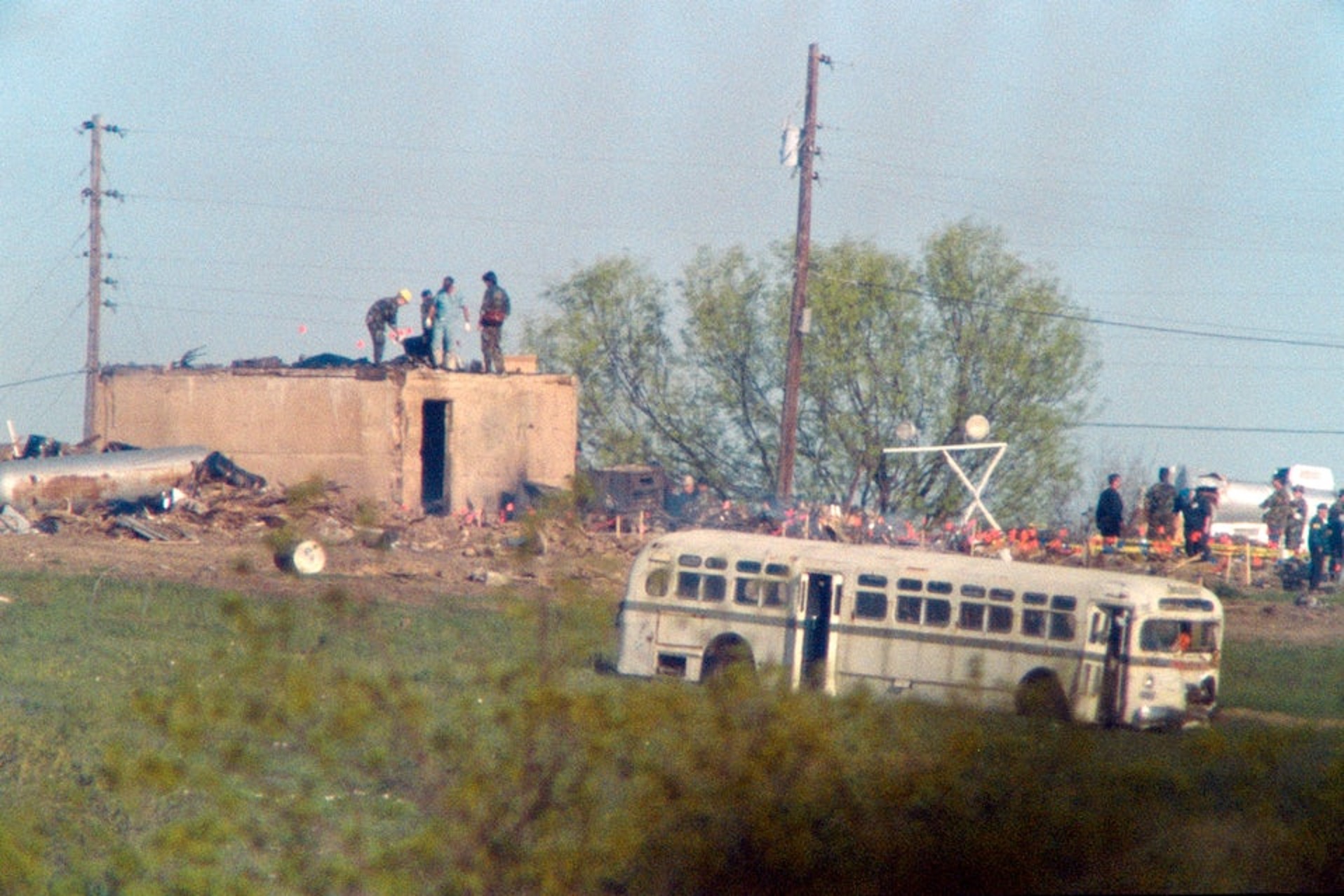
The ATF used an affidavit filed by Special Agent David Aguilera to obtain the search and arrest warrant that led to the Waco siege. The official filing date of this affidavit was February 25, 1993.
Allegedly, the initial investigation began in June 1992 when a postal worker informed a sheriff of McLennan County that he believed he had been delivering explosives to the ammo and gun store owned and operated by the Branch Davidians. This store, named the “Mag-Bag”, had been identified by the said postal worker as suspicious in deliveries. The postal worker continued deliveries to the Mt. Carmel Center and reported seeing occupied observation posts; in the affidavit, it states he believed there were armed personnel at these observation posts.
The McLennan county sheriff was notified in May and June of that year of two cases of inert grenades, black gunpowder, 90 pounds of powdered aluminum metal, and 30–40 cardboard tubes. Furthermore, the sheriff noticed another shipment of sixty AR-15/M-16 (STANAG) magazines, to which Aguilera made the statement, “I have been involved in many cases where defendants, following a relatively simple process, convert AR-15 semi-automatic rifles to fully automatic rifles of the nature of the M-16” to justify the ATF’s involvement in the case.
In November 1992, a local farmer reported to the sheriff that he had heard machine gunfire. “By the sound of it,” he said, “it was likely a .50 caliber machine gun and multiple M-16s.” This farmer claimed he was very familiar with machine guns, having done a tour overseas in the U.S Army. The affidavit closed with Aguilera verifying the story via interviews made with associated parties and gun shops from which the Mag-Bag purchased items.
Among these items were over forty-five AR-15 upper receivers and five M-16 upper receivers, which Aguilera annotated, “These kits contain all the parts of an M-16 except for the lower receiver unit, which is the ‘firearm’ by lawful definition,” admitting that neither the noise complaints nor the items ordered were necessarily illegal
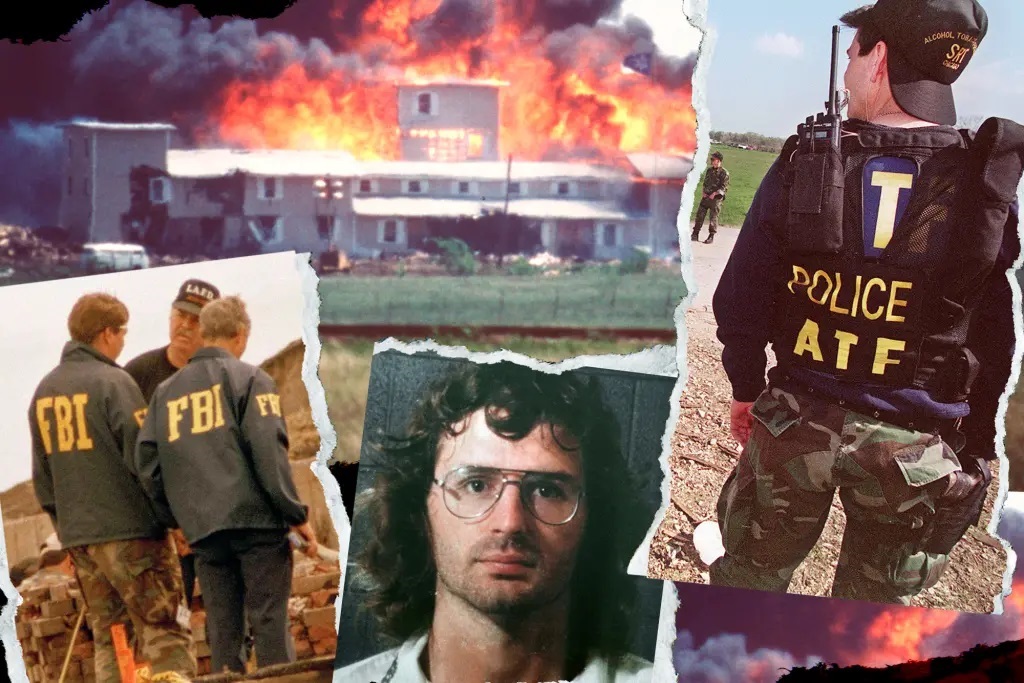
Using the affidavit filed by Aguilera that alleged that the Davidians had violated federal law, the ATF obtained search and arrest warrants for Koresh and specific followers on weapons charges, citing the many firearms they had accumulated.The search warrant commanded a search “on or before February 28, 1993”, in the daytime between 6:00 am and 10:00 pm.
The ATF made a claim that Koresh was possibly operating a methamphetamine lab, to establish a drug nexus and obtain military assets under the war on drugs.Although the ATF’s investigation “focused on firearm violations, not on illegal drugs”.
The ATF requested assistance from the DEA and the DOD “citing a drug connection” based on 1) a recent delivery to the compound of “chemicals, instruments, and glassware”, 2) a written testimony from a former compound resident, alleging “Howell had told him that drug trafficking was a desirable way to raise money”, 3) several current residents who “had prior drug involvement”, 4) two former residents who were incarcerated for drug-trafficking crimes, and 5) National Guard overflights’ thermal images showing a “hot spot inside the compound, possibly indicating a methamphetamine laboratory”.
Although the original request for assistance was initially approved, the commander of the Special Forces detachment questioned the request, and the ATF obtained only a training site at Fort Hood, Texas, from February 25 to February 27 with safety inspections for the training lanes, and was given only medical and communications training and equipment.
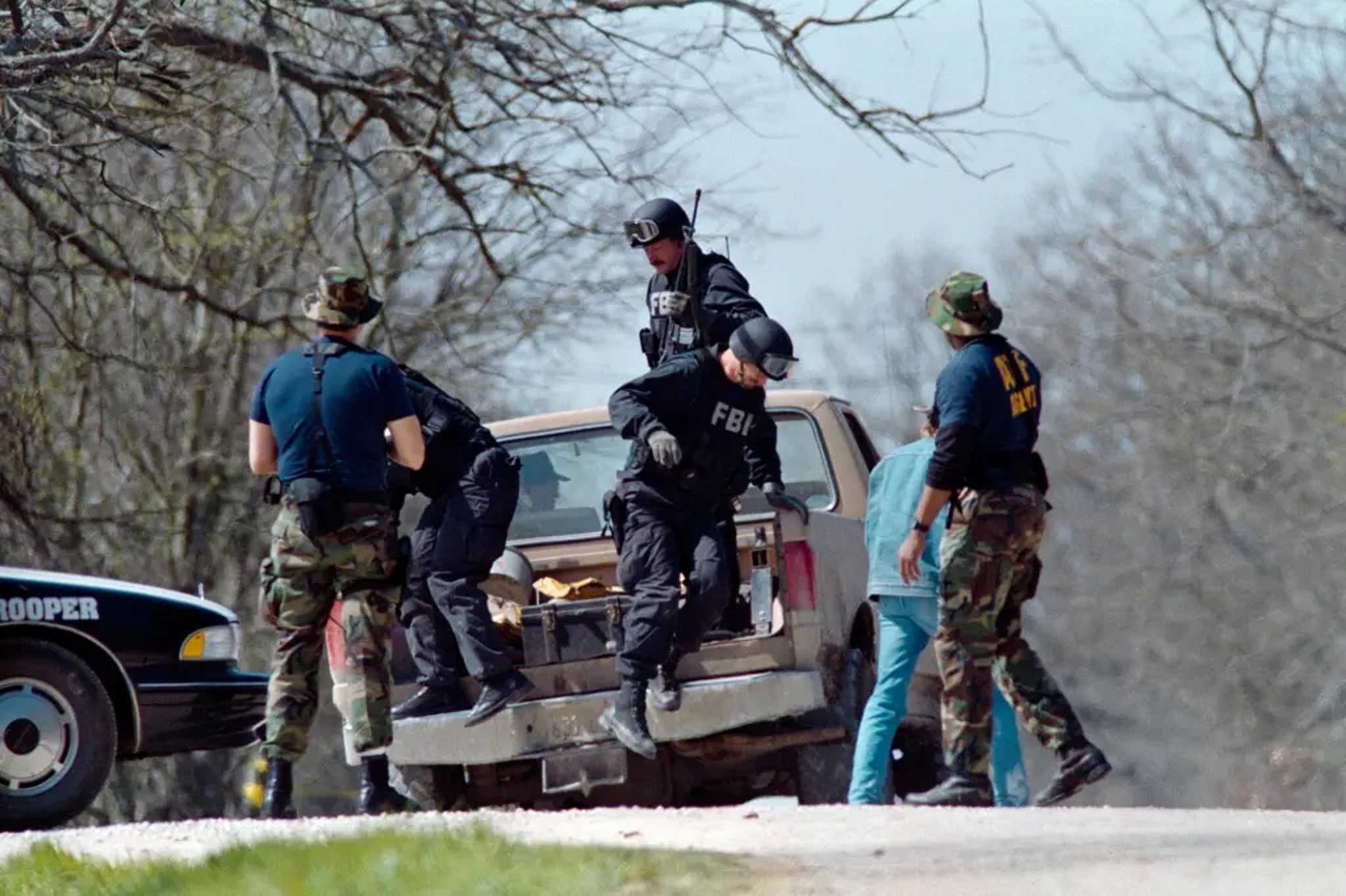
The FBI was feeling pressure to resolve Waco swiftly and quickly. /AFP via Getty Images
The ATF had planned their raid for Monday, March 1, 1993, with the code name “Showtime”. The ATF later claimed that the raid was moved up a day, to February 28, 1993, in response to the Waco Tribune-Herald’s “The Sinful Messiah” series of articles (which the ATF had tried to prevent from being published).
Beginning February 1, ATF agents had three meetings with Tribune-Herald staff regarding a delay in publication of “The Sinful Messiah”. The paper was first told by the ATF that the raid would take place February 22, which they changed to March 1, and then ultimately to an indefinite date. ATF agents felt the newspaper had held off publication at the request of the ATF for at least three weeks.
In a February 24 meeting between Tribune-Herald staff and ATF agent Phillip Chojancki and two other agents, the ATF could not give the newspaper staff a clear idea of what action was planned or when. The Tribune-Herald informed ATF they were publishing the series, which included an editorial calling for local authorities to act.
Personnel of the Tribune-Herald found out about the imminent raid after the first installment of “The Sinful Messiah” had already appeared on February 27.
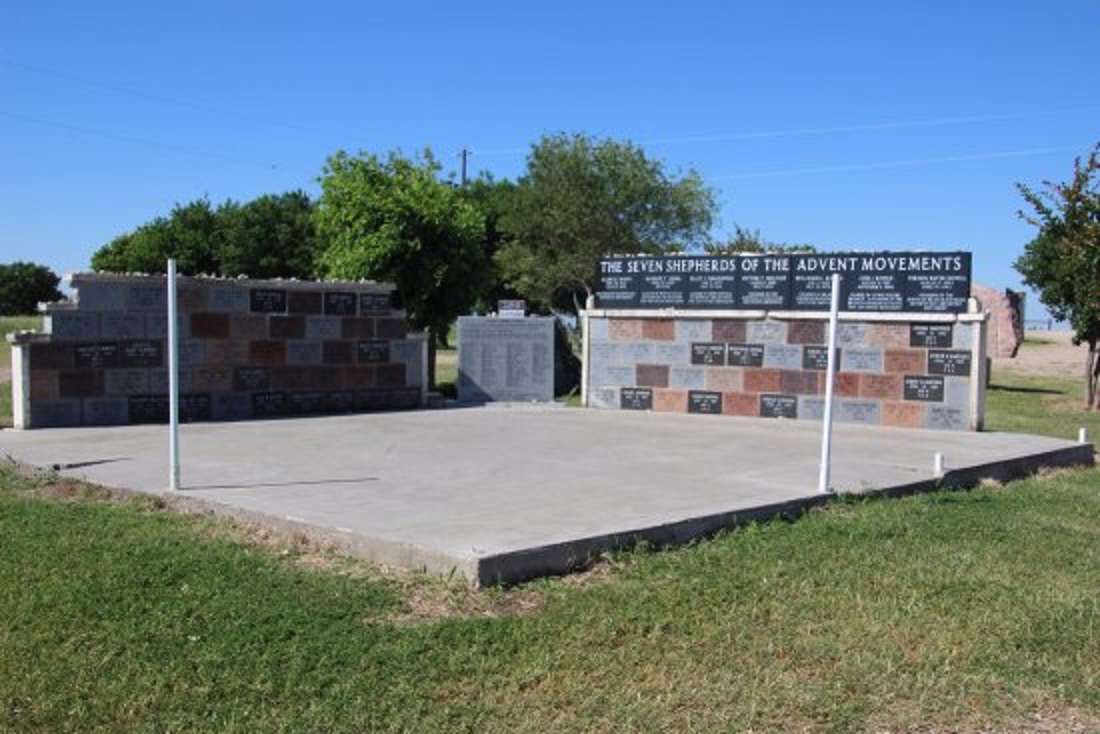
The memorial that now stands at the site of the branch dividian compound.
Although the ATF preferred to arrest Koresh when he was outside Mount Carmel, planners received inaccurate information that Koresh rarely left it. The Branch Davidian members were well known locally and had cordial relations with other locals.
The Branch Davidians partly supported themselves by trading at gun shows and took care to have the relevant paperwork to ensure their transactions were legal. Branch Davidian Paul Fatta was a federal firearms licensed dealer, and the group operated a retail gun business called the Mag Bag. When shipments for the Mag-Bag arrived, they were signed for by Fatta, Steve Schneider, or Koresh. The morning of the raid, Paul Fatta and his son Kalani were on their way to an Austin gun show to conduct business.
The ATF attempted to execute their search warrant on Sunday morning, February 28, 1993. The local sheriff, in audiotapes broadcast after the incident, said he was not apprised of the raid. Despite being informed that the Branch Davidians knew a raid was coming, the ATF commander ordered that it go ahead, even though their plan depended on reaching the compound without the Branch Davidians being armed and prepared.While not standard procedure, ATF agents had their blood type written on their arms or neck after leaving the staging area and before the raid, because it was recommended by the military to facilitate speedy blood transfusions in the case of injury.
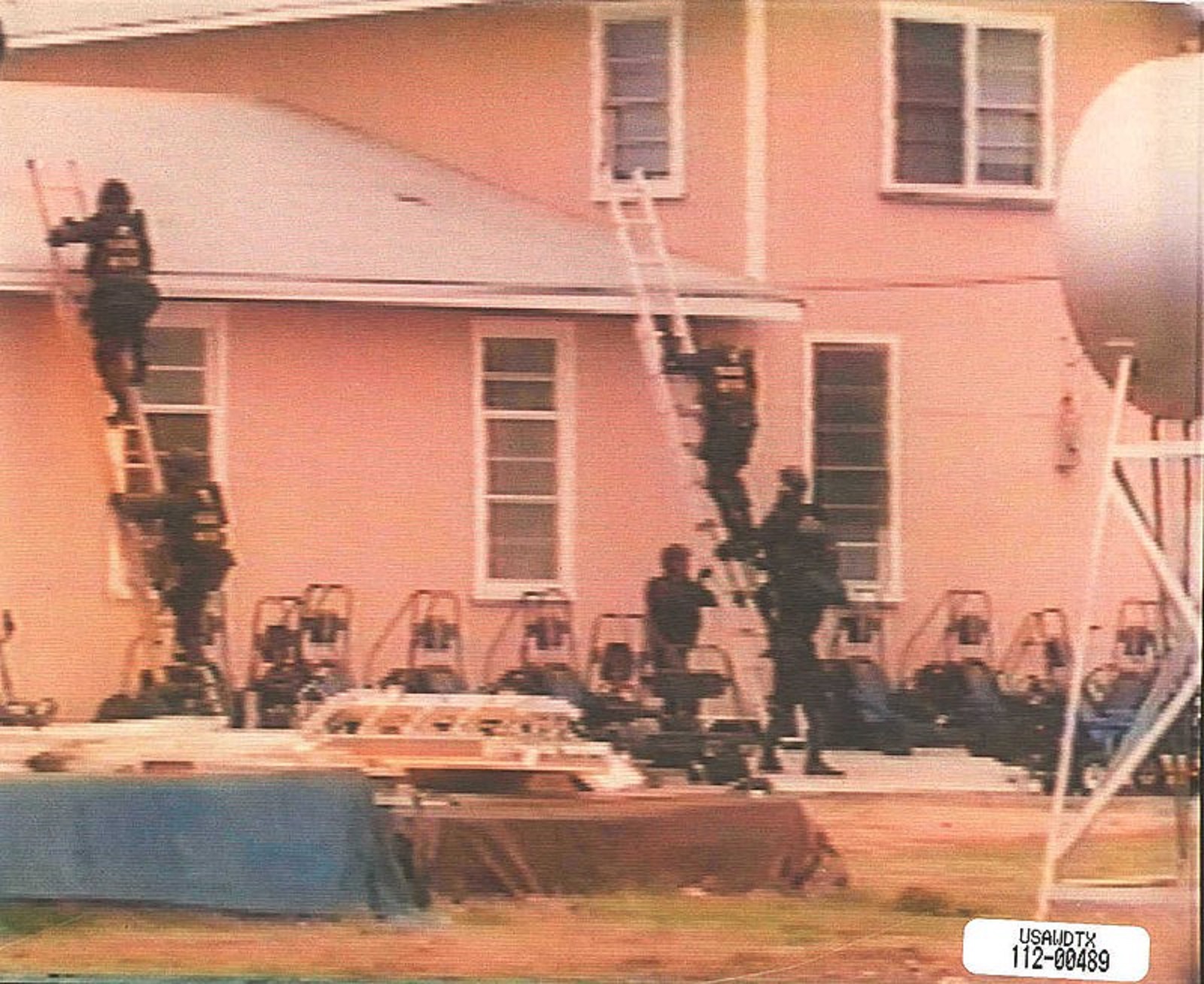
Agents attempting to enter the Branch Davidian compound. on februart 28,1993
Any advantage of surprise was lost when a KWTX-TV reporter who had been tipped off about the raid asked for directions from a U.S. Postal Service mail carrier who was coincidentally Koresh’s brother-in-law.
Koresh then told undercover ATF agent Robert Rodriguez that they knew a raid was imminent.
Rodriguez had infiltrated the Branch Davidians and was astonished to find that his cover had been blown. The agent made an excuse and left the compound.
When asked later what the Branch Davidians had been doing when he left the compound, Rodriguez replied, “They were praying.” Branch Davidian survivors have written that Koresh ordered selected male followers to begin arming and taking up defensive positions, while the women and children were told to take cover in their rooms.
Koresh told them he would try to speak to the agents, and what happened next would depend on the agents’ intentions. The ATF arrived at 9:45 am in a convoy of civilian vehicles containing uniformed personnel in SWAT-style tactical gear.

ATF agents stated that they heard shots coming from within the compound, while Branch Davidian survivors claimed that the first shots came from the ATF agents outside. A suggested reason may have been an accidental discharge of a weapon, possibly by an ATF agent, causing the ATF to respond with fire from automatic weapons.
Other reports claim the first shots were fired by the ATF “dog team” sent to kill the dogs in the Branch Davidian kennel.Three helicopters of the Army National Guard were used as an aerial distraction, and all took incoming fire. During the first shots, Koresh was wounded, shot in the hand and the stomach. Within a minute of the raid’s start, Branch Davidian Wayne Martin called emergency services, pleading for them to stop shooting. Martin asked for a ceasefire, and audiotapes record him saying, “Here they come again!” and, “That’s them shooting! That’s not us!”
The first ATF casualty was an agent who had made it to the west side of the building before he was wounded. Agents quickly took cover and fired at the buildings while the helicopters began their diversion and swept in low over the complex, 350 feet (105 m) away from the building.
The Branch Davidians fired on the helicopters and hit them, although none of the crewmembers were injured; in response, the helicopter pilots chose to pull away from the compound and land. On the east side of the compound, agents brought out two ladders and set them against the side of the building. They then climbed onto the roof to secure it to reach Koresh’s room and the location where they believed weapons were stored.
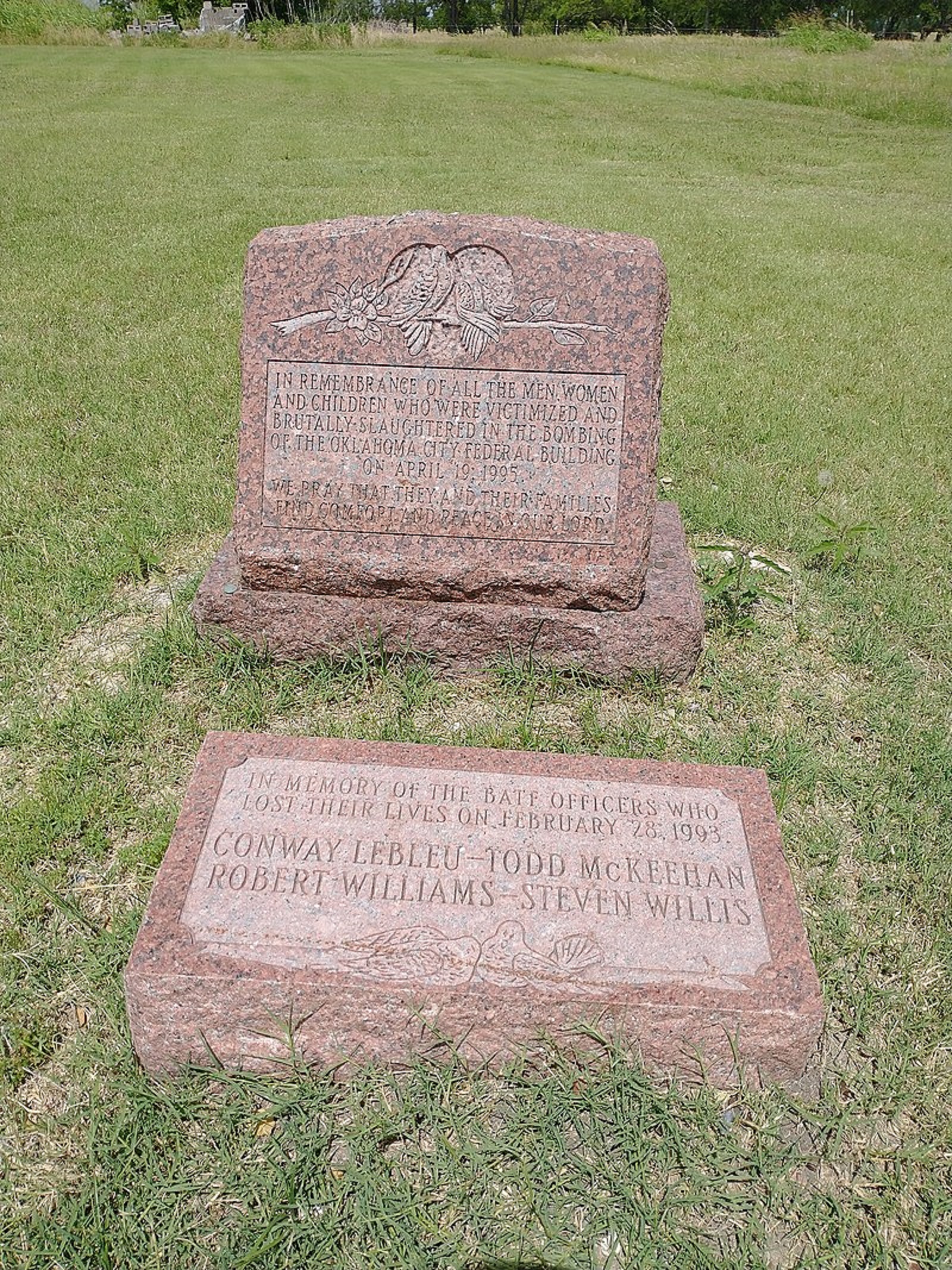
A memorial to the four ATF agents killed in the february 28 raid on the mount carmel Center
On the west slope of the roof, three agents reached Koresh’s window and were crouching beside it when they came under fire. One agent was killed and another wounded. The third agent clambered over the peak of the roof and joined other agents attempting to enter the armory. The window was smashed, a flashbang stun grenade was thrown in, and three agents entered the armory.
When another tried to follow them, a hail of bullets penetrated the wall and wounded him, but he was able to reach a ladder and slide to safety. An agent fired his shotgun at Branch Davidians until he was hit in the head by return fire and killed.Inside the armory, the agents killed a Branch Davidian and discovered a cache of weapons, but subsequently came under heavy fire; two were wounded.
As they escaped, the third agent laid down covering fire, killing a Branch Davidian. As he made his escape, he hit his head on a wooden support beam and fell off the roof but survived. An agent outside provided them with covering fire but was shot by a Branch Davidian and killed instantly. Dozens of ATF agents took cover, many behind Branch Davidian vehicles, and exchanged fire with the Branch Davidians. The number of ATF wounded increased, and an agent was killed by gunfire from the compound as agents were firing at a Branch Davidian perched on top of the water tower. The exchange of fire continued, but 45 minutes into the raid the gunfire began to slow down as agents began to run low on ammunition. The shooting continued for a total of two hours.
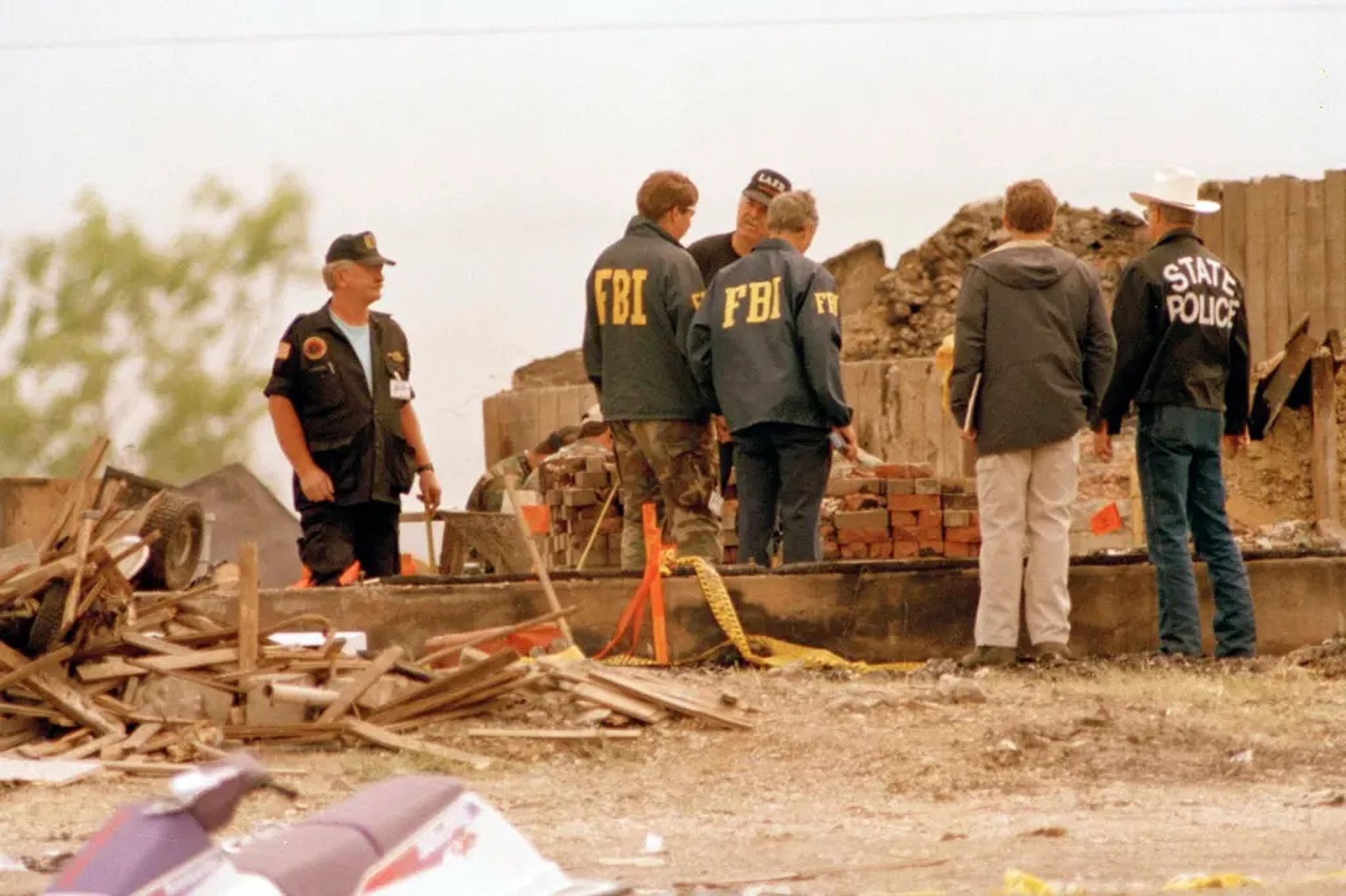
Sheriff Lt. Lynch of the McLennan County Sheriff Department contacted the ATF and negotiated a ceasefire. Sheriff Harwell states in William Gazecki’s documentary Waco: The Rules of Engagement that the ATF agents withdrew only after they were out of ammunition.
ATF agent Chuck Hustmyre later wrote: “About 45 minutes into the shootout, the volume of gunfire finally started to slacken. We were running out of ammunition. The Davidians, however, had plenty.” In all, four ATF agents (Steve Willis, Robert Williams, Todd McKeehan, and Conway Charles LeBleu) had been killed during the firefight.
Another 16 had been injured. After the ceasefire, the Branch Davidians allowed the ATF dead and wounded to be evacuated and held their fire during the ATF retreat.
The five Branch Davidians killed in the raid were Winston Blake, Peter Gent, Peter Hipsman, Perry Jones, and Jaydean Wendell; two were killed at the hands of the Branch Davidians after having been wounded. Their bodies were buried on the grounds. Nearly six hours after the 11:30 am ceasefire, Michael Schroeder was shot dead by ATF agents who alleged he fired a pistol at agents as he attempted to re-enter the compound with Woodrow Kendrick and Norman Allison.
Alan A. Stone’s report states that the Branch Davidians did not ambush the ATF and that they “apparently did not maximize the kill of ATF agents”, explaining that they were rather “desperate religious fanatics expecting an apocalyptic ending, in which they were destined to die defending their sacred ground and destined to achieve salvation.” A 1999 federal report noted:
“The violent tendencies of dangerous cults can be classified into two general categories-defensive violence and offensive violence. Defensive violence is utilized by cults to defend a compound or enclave that was created specifically to eliminate most contact with the dominant culture. The 1993 clash in Waco, Texas at the Branch Davidian complex is an illustration of such defensive violence. History has shown that groups that seek to withdraw from the dominant culture seldom act on their beliefs that the endtime has come unless provoked.”
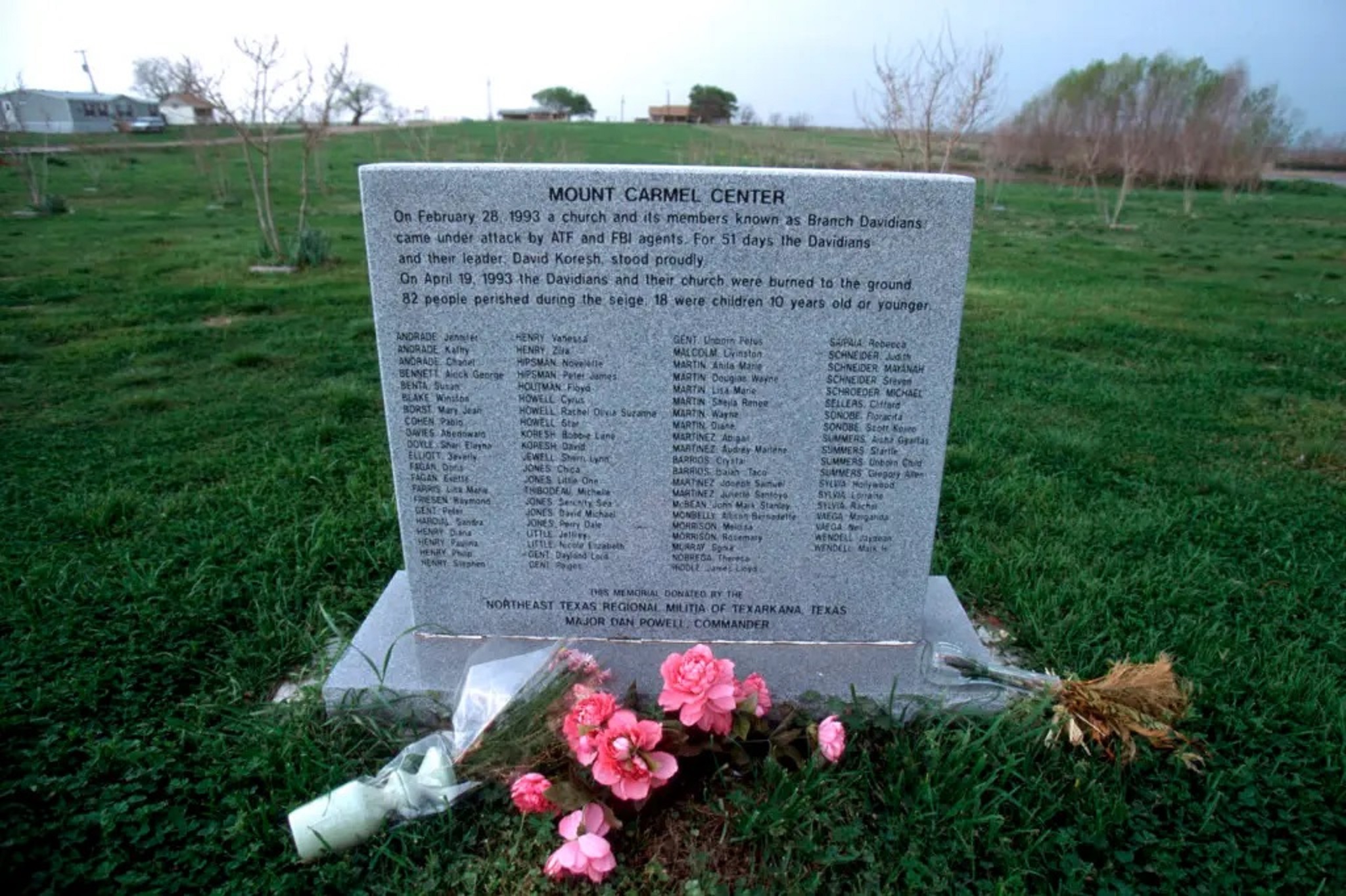
ATF agents established contact with Koresh and others inside the compound after they withdrew. The FBI took command soon after as a result of the deaths of federal agents, placing Jeff Jamar, head of the Bureau’s San Antonio field office, in charge of the siege as Site Commander. The FBI Hostage Rescue Team (HRT) was headed by HRT Commander Richard Rogers, who had previously been criticized for his actions during the Ruby Ridge incident.
As at Ruby Ridge, Rogers often overrode the Site Commander at Waco and had mobilized both the Blue and Gold HRT tactical teams to the same site, which ultimately created pressure to resolve the situation tactically due to lack of HRT reserves.
At first, the Davidians had telephone contact with local news media, and Koresh gave phone interviews. The FBI cut Davidian communication to the outside world. For the next 51 days, communication with those inside was by telephone by a group of 25 FBI negotiators.The final Justice Department report found that negotiators criticized the tactical commanders for undercutting negotiations.
In the first few days, the FBI believed they had made a breakthrough when they negotiated with Koresh an agreement that the Branch Davidians would peacefully leave the compound in return for a message, recorded by Koresh, being broadcast on national radio.
The broadcast was made, but Koresh then told negotiators that God had told him to remain in the building and “wait”.Despite this, soon afterwards negotiators managed to facilitate the release of 19 children, ranging in age from five months to 12 years old, without their parents.However, 98 people remained in the building.The children were then interviewed by the FBI and Texas Rangers, some for hours at a time.Allegedly, the children had been physically and sexually abused long before the standoff.
This was the key justification offered by the FBI (both to then President Bill Clinton and to Attorney General Janet Reno) for launching tear gas attacks to force the Branch Davidians out of the compound
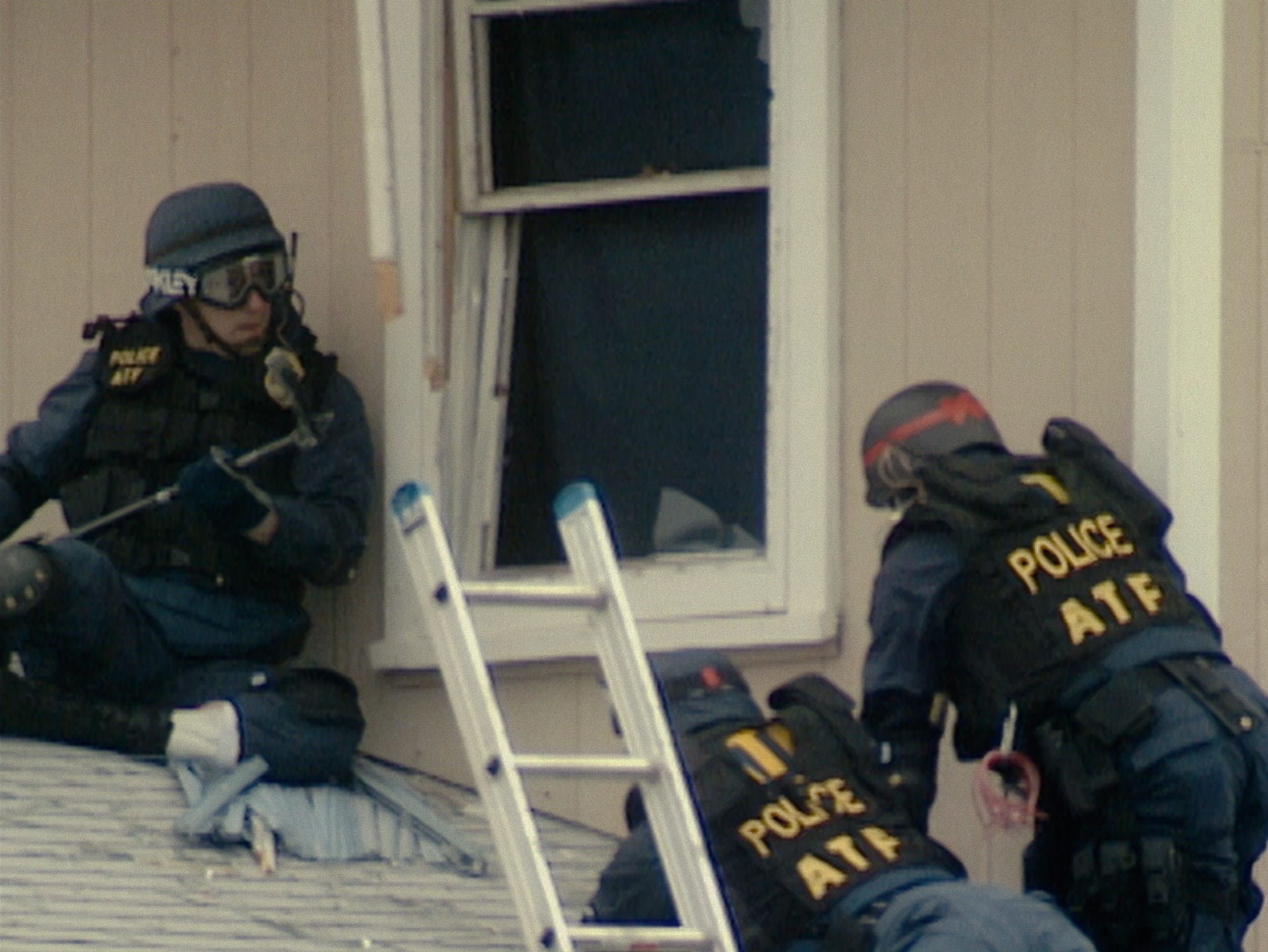
During the siege, the FBI sent a video camera to the Branch Davidians. In the videotape made by Koresh’s followers, Koresh introduced his children and his “wives” to the FBI negotiators, including several minors who claimed to have had babies fathered by Koresh. (Koresh had fathered perhaps 14 of the children who stayed with him in the compound.) Several Branch Davidians made statements in the video.
On day nine, Monday, March 8, the Branch Davidians sent out the videotape to show the FBI that there were no hostages, but everyone was staying inside on their own free will. This video also included a message from Koresh.
The negotiators’ log showed that when the tape was reviewed, there was concern that the tape’s release to the media would gain sympathy for Koresh and the Branch Davidians.
Videos also showed the 23 children still inside the compound, and child care professionals on the outside prepared to take care of those children as well as the previous 19 released.
As the siege continued, Koresh negotiated for more time, allegedly so that he could write religious documents he needed to complete before surrendering. His conversations, which were dense with Biblical imagery, alienated the federal negotiators, who treated the situation as a hostage crisis. Among themselves, the negotiation teams took to calling Koresh’s words “Bible babble
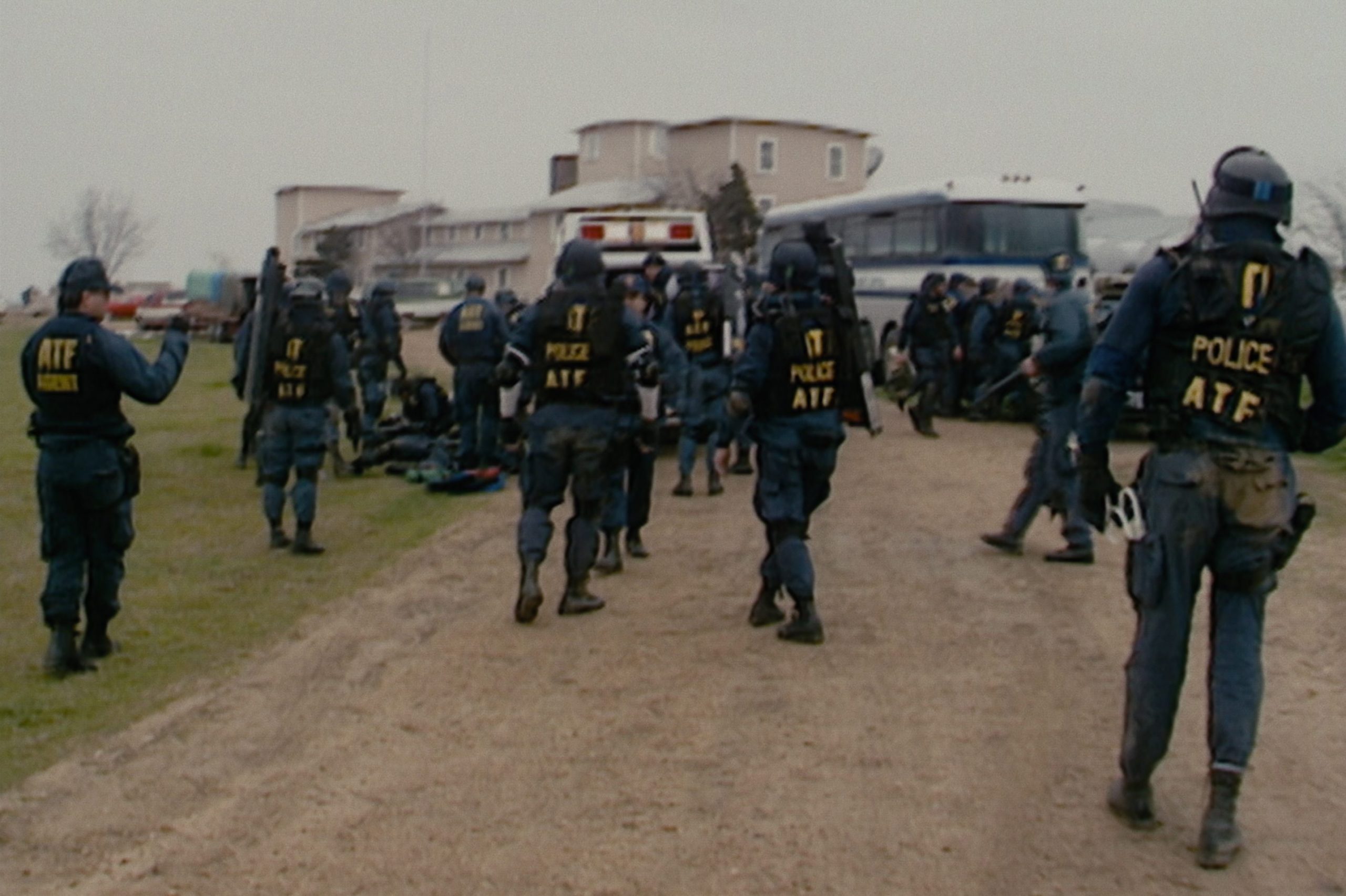
As the siege wore on, two factions developed within the FBI, one believing negotiation to be the answer, the other, force. Increasingly aggressive techniques were used to try to force the Branch Davidians out. For instance, sleep deprivation of the inhabitants through all-night broadcasts of recordings of jet planes, pop music, Buddhist chanting, and the screams of rabbits being slaughtered.
Outside the compound, nine Bradley Fighting Vehicles carrying M651 CS tear gas grenades and Ferret rounds and five M728 Combat Engineer Vehicles obtained from the U.S. Army began patrolling The armored vehicles were used to destroy perimeter fencing and outbuildings and crush cars belonging to the Branch Davidians. Armored vehicles repeatedly drove over the grave of Branch Davidian Peter Gent despite protests by the Branch Davidians and the negotiators
Two of the three water storage tanks on the roof of the main building had been damaged during the initial ATF raid. Eventually, the FBI cut all power and water to the compound, forcing those inside to survive on rainwater and stockpiled military MRE rations.Criticism was later leveled by Schneider’s attorney, Jack Zimmerman, at the tactic of using sleep-and-peace-disrupting sound against the Branch Davidians: “The point was this—they were trying to have sleep disturbance and they were trying to take someone that they viewed as unstable to start with, and they were trying to drive him crazy. And then they got mad ‘cos he does something that they think is irrational!
Despite the increasingly aggressive tactics, Koresh ordered a group of followers to leave. Eleven people left and were arrested as material witnesses, with one person charged with conspiracy to murder.The children’s willingness to stay with Koresh disturbed the negotiators, who were unprepared to work around the Branch Davidians’ religious zeal. However, as the siege went on, the children were aware that an earlier group of children who had left with some women were immediately separated, and the women arrested.
During the siege, several scholars who study apocalypticism in religious groups attempted to persuade the FBI that the siege tactics being used by government agents would only reinforce the impression within the Branch Davidians that they were part of a Biblical “end-of-times” confrontation that had cosmic significanceThis would likely increase the chances of a violent and deadly outcome. The religious scholars pointed out that the beliefs of the group may have appeared to be extreme, but to the Branch Davidians, their religious beliefs were deeply meaningful, and they were willing to die for them

Firearms retrieved from the Mount Carmel compound and tagged as evidence.
Koresh’s discussions with the negotiating team became increasingly difficult. He proclaimed that he was the Second Coming of Christ and had been commanded by his father in heaven to remain in the compound. One week before the April 19 assault, FBI planners considered using snipers to kill David Koresh and possibly other key Branch Davidians.
The FBI voiced concern that the Branch Davidians might commit mass suicide, as had happened in 1978 at Jim Jones’s Jonestown complex. Koresh had repeatedly denied any plans for mass suicide when confronted by negotiators during the standoff, and people leaving the compound had not seen any such preparation
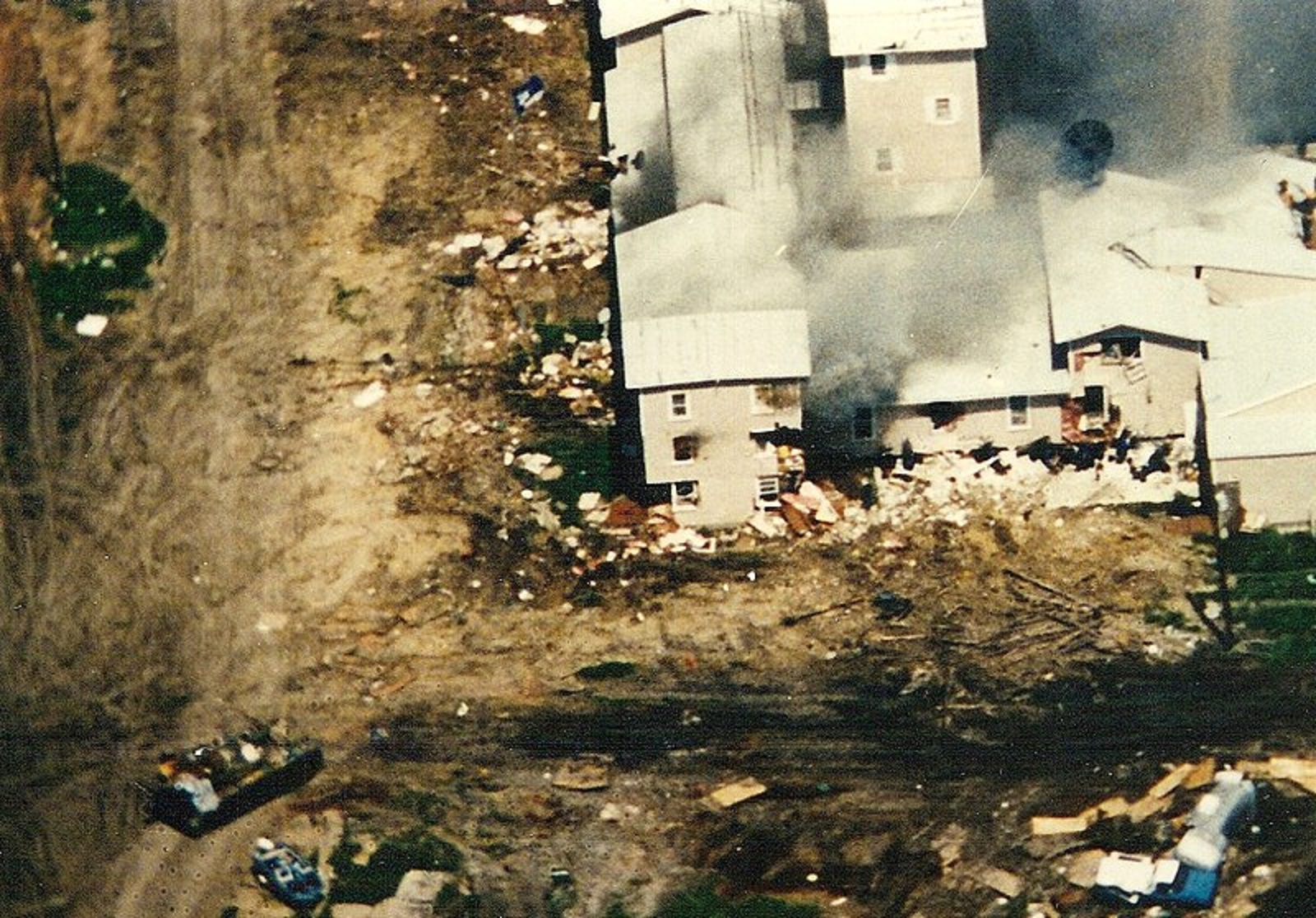
Smoke rises from the compound.
Newly appointed U.S. Attorney General Janet Reno approved recommendations by the FBI Hostage Rescue Team to mount an assault, after being told that conditions were deteriorating and that children were being abused inside the compound.Reno made the FBI’s case to President Clinton. Recalling the April 19, 1985, The Covenant, The Sword, and the Arm of the Lord (CSA) siege in Arkansas (which was ended without loss of life by a blockade without a deadline), President Clinton suggested similar tactics against the Branch Davidians.
Reno countered that the FBI Hostage Rescue Team was tired of waiting; that the standoff was costing a million dollars per week; that the Branch Davidians could hold out longer than the CSA; and that the chances of child sexual abuse and mass suicide were imminent. Clinton later recounted: “Finally, I told her that if she thought it was the right thing to do, she could go ahead.” Over the next several months, Reno’s reason for approving the final tear gas attack varied from her initial claim that the FBI Hostage Rescue Team had told her that Koresh was sexually abusing children and beating babies (the FBI Hostage Rescue Team later denied evidence of child abuse during the standoff) to her claim that Linda Thompson’s “Unorganized Militia of the United States” was on the way to Waco “either to help Koresh or to attack him.”
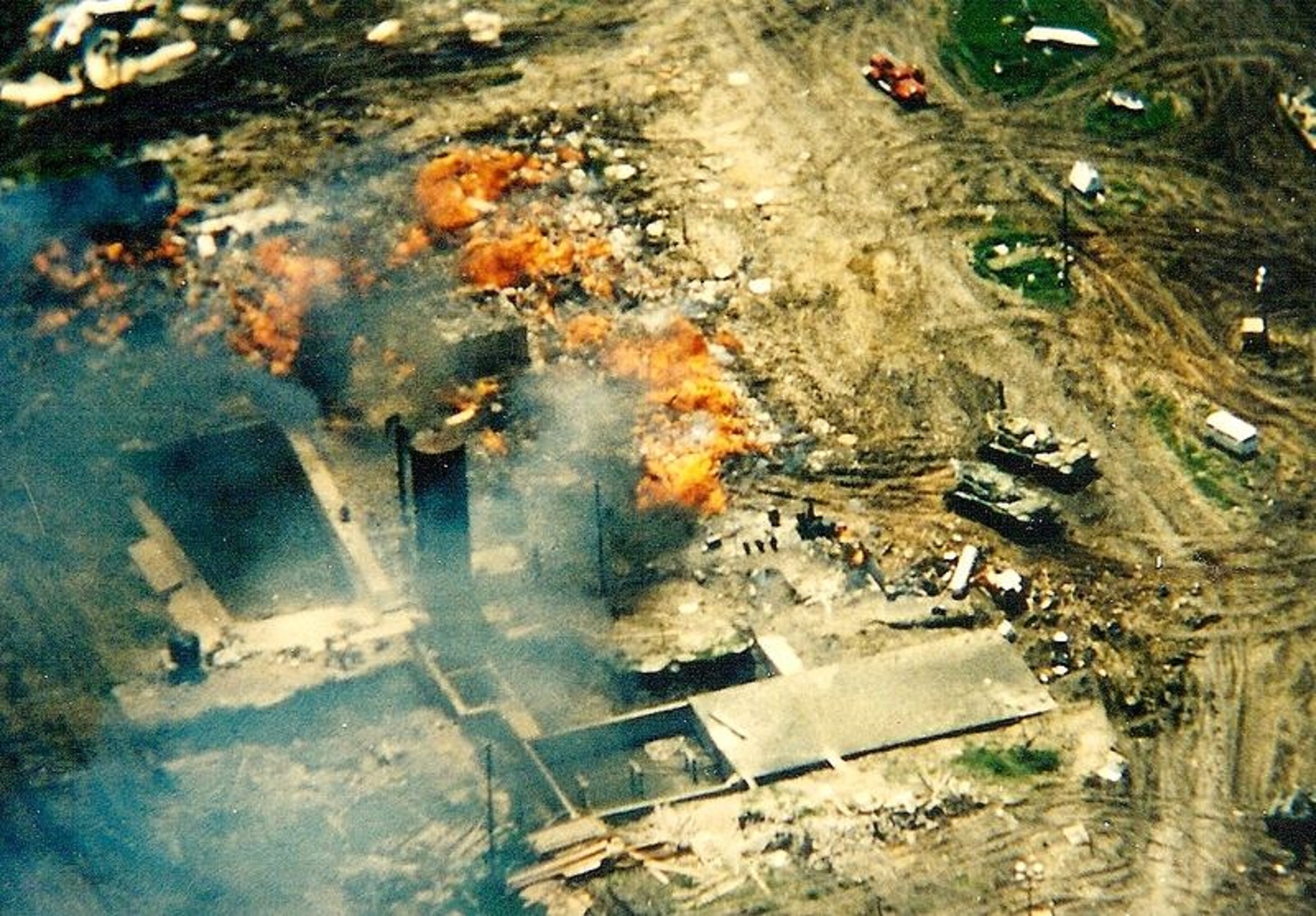
Last remnants of the razed mount carmel center burnd down .
The assault took place on April 19, 1993. Because the Branch Davidians were heavily armed, the FBI Hostage Rescue Team’s arms included .50 caliber (12.7 mm) rifles and armored Combat Engineering Vehicles (CEV). The CEVs used explosives to punch holes in the walls of buildings of the compound so they could pump in CS gas (“tear gas”) and try to force the Branch Davidians out without harming them. The stated plan called for increasing amounts of gas to be pumped in over two days to increase pressure.
Officially, no armed assault was to be made. Loudspeakers were to be used to tell the Branch Davidians that there would be no armed assault and to ask them not to fire on the vehicles. According to the FBI, the Hostage Rescue Team agents had been permitted to return any incoming fire, but no shots were fired by federal agents on April 19. When several Branch Davidians opened fire, the FBI Hostage Rescue Team’s response was only to increase the amount of gas being used.
The FBI Hostage Rescue Team delivered 40-millimetre (1.6 in) Ferret brand CS gas rounds via M79 grenade launchers. Very early in the morning, the FBI Hostage Rescue Team fired two military M651 CS gas rounds at the Branch Davidian construction site. Around mid-morning, the FBI Hostage Rescue Team began to run low on 40 mm Ferret CS rounds and asked Texas Ranger Captain David Byrnes for tear gas rounds. The tear gas rounds procured from Company “F” in Waco turned out to be unusable pyrotechnic and were returned to the Company “F” office afterward.
40 mm munitions recovered by the Texas Rangers at Waco included dozens of plastic Ferret Model SGA-400 Liquid CS rounds, two metal M651E1 military pyrotechnic tear gas rounds, two metal NICO Pyrotechnik sound and flash grenades, and parachute illumination flares.After more than six hours, no Branch Davidians had left the building, sheltering instead in an underground concrete block room (“the bunker”) within the building or using gas masks.
At around noon, three fires broke out almost simultaneously in different parts of the building and spread quickly; footage of the blaze was broadcast live by television crews. The government maintains the fires were deliberately started by the Branch Davidians.Some Branch Davidian survivors and other experts maintain that the fires were accidentally or deliberately started by the assault, possibly by the types of pyrotechnic rounds used by the FBI.
Only nine people left the building during the fire. The remaining Branch Davidians, including the children, were either buried alive by rubble, suffocated, or shot. Many were killed by smoke or carbon monoxide inhalation and other causes as fire engulfed the building. According to the FBI, Steve Schneider—Koresh’s top aide-shot and killed Koresh and then himself. In all, 76 people died.[A large concentration of bodies, weapons, and ammunition was found in “the bunker” storage room. The Texas Rangers’ arson investigator report assumes that many of the occupants were either denied escape from within or refused to leave until escape was not an option.
It also mentions that the structural debris from the breaching operations on the west end of the building could have blocked a possible escape route through the tunnel system. An independent investigation by two experts from the University of Maryland’s Department of Fire Protection Engineering concluded that the compound residents had sufficient time to escape the fire, if they had so desired

the compound ./Wacco siege massacre .
Autopsies of the dead revealed that some women and children found beneath a fallen concrete wall of a storage room died of skull injuries. The U.S. Department of Justice report indicated that only one body had traces of benzene, one of the components of solvent-dispersed CS gas, but that the gas insertions had finished nearly one hour before the fire started, and that it was enough time for solvents to dissipate from the bodies of the Branch Davidians that had inhaled the tear gas.
Autopsy records also indicate that at least 20 Branch Davidians were shot, including Koresh as well as five children under the age of 14. Three-year-old Dayland Gent was stabbed in the chest. The medical examiner who performed the autopsies believed these deaths were mercy killings by the Branch Davidians trapped in the fire with no escape.
The expert retained by the U.S. Office of Special Counsel concluded that many of the gunshot wounds “support self-destruction either by overt suicide, consensual execution (suicide by proxy), or less likely, forced execution.”
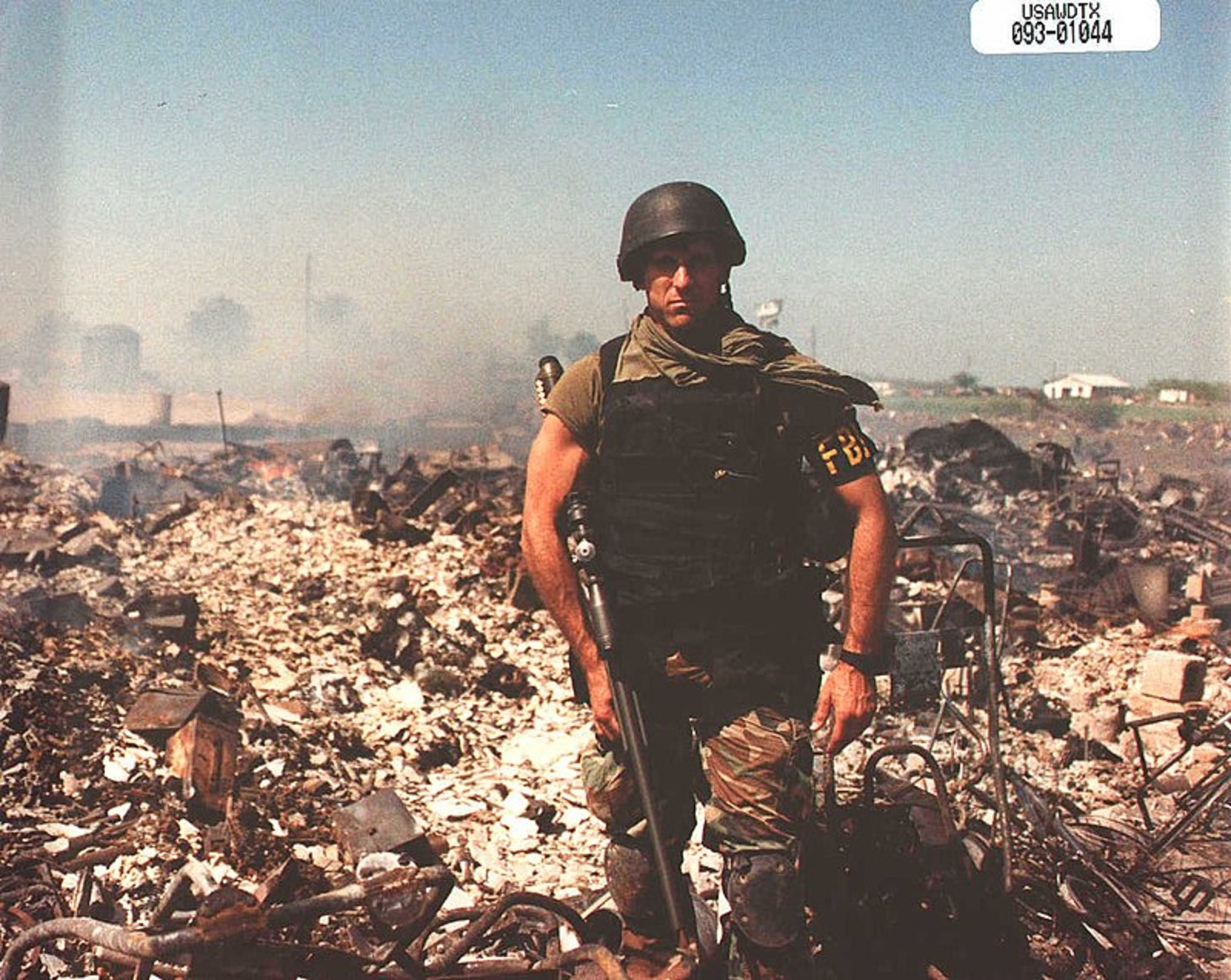
An FBI agent photografed in the ramains of the burned building.
The new ATF Director, John Magaw, criticized several aspects of the ATF raid. Magaw made the Treasury “Blue Book” report on Waco required reading for new agents. A 1995 Government Accountability Office report on the use of force by federal law enforcement agencies observed that “On the basis of Treasury’s report on the Waco operation and views of tactical operations experts and ATF’s own personnel, ATF decided in October 1995 that dynamic entry would only be planned after all other options have been considered and began to adjust its training accordingly.”
Nothing remains of the buildings today other than concrete foundation components, as the entire site was bulldozed two weeks after the end of the siege. Only a small chapel, built years after the siege, stands on the site.
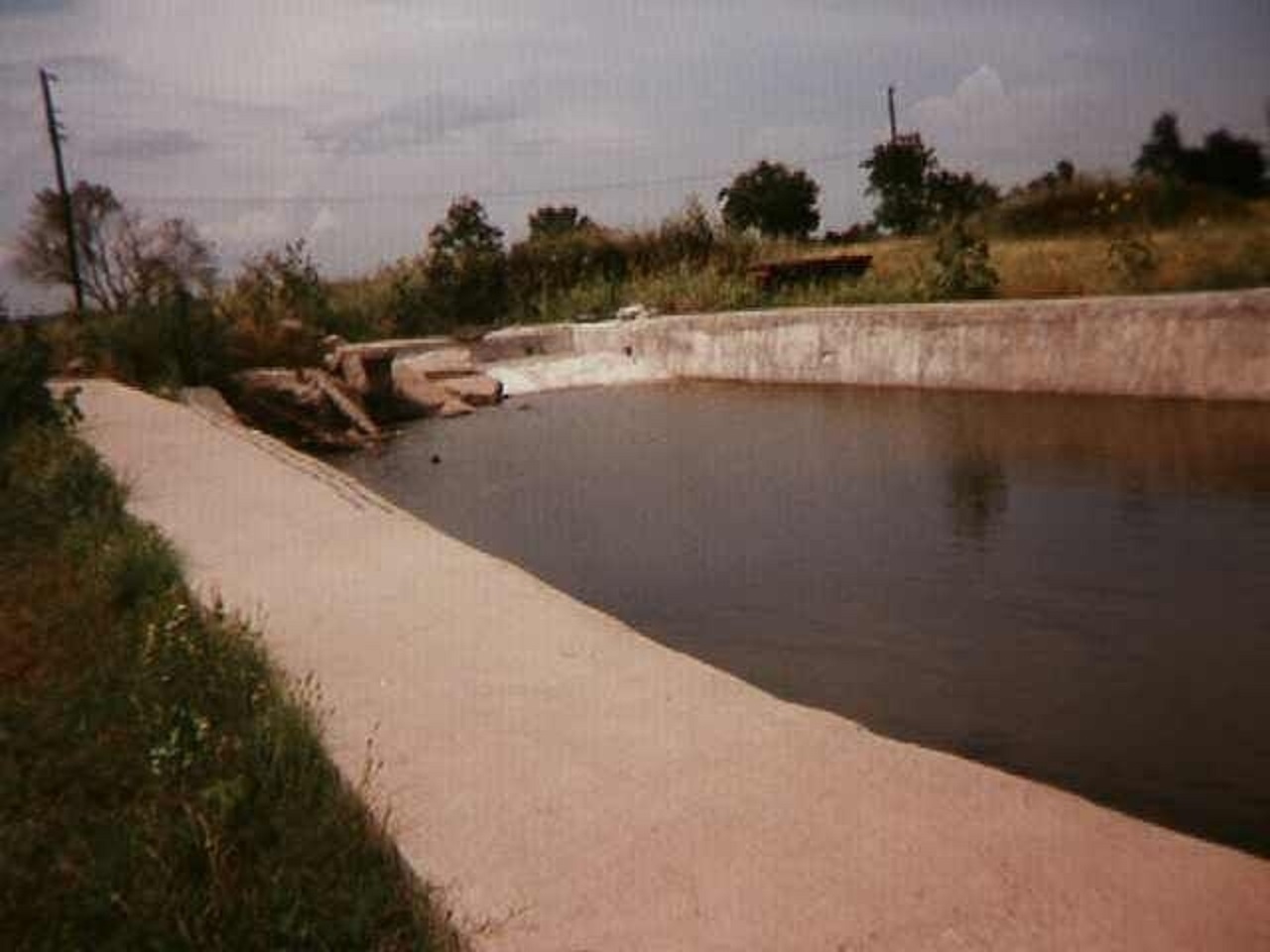
Remains of a swimming pool left on the ground of mount carmel center .
The events at Mount Carmel spurred both criminal prosecution and civil litigation. On August 3, 1993, a federal grand jury returned a superseding ten-count indictment against 12 of the surviving Branch Davidians. The grand jury charged, among other things, that the Branch Davidians had conspired to, and aided and abetted in, the murder of federal officers, and had unlawfully possessed and used various firearms.The government dismissed the charges against one of the 12 Branch Davidians according to a plea bargain.
After a jury trial lasting nearly two months, the jury acquitted four of the Branch Davidians on all charges. Additionally, the jury acquitted all of the Branch Davidians on the murder-related charges but convicted five of them on lesser charges, including aiding and abetting the voluntary manslaughter of federal agents. Eight Branch Davidians were convicted on firearms charges.
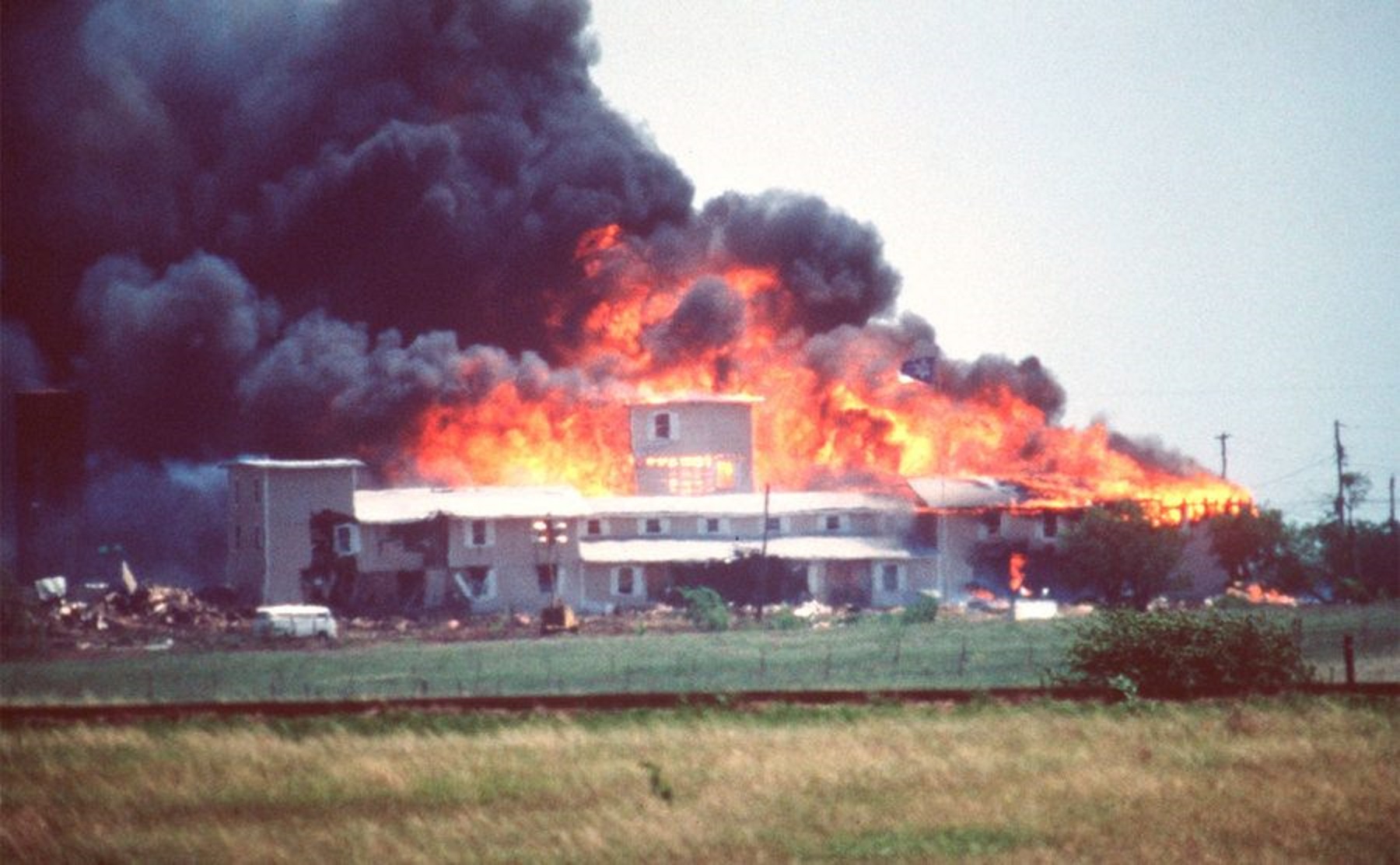
The convicted Branch Davidians, who received sentences of up to 40 years, were:
Kevin A. Whitecliff – convicted of voluntary manslaughter and using a firearm during a crime.
Jaime Castillo -convicted of voluntary manslaughter and using a firearm during a crime.
Paul Gordon Fatta – convicted of conspiracy to possess machine guns and aiding Branch Davidian leader David Koresh in possessing machine guns.
Renos Lenny Avraam (British national) – convicted of voluntary manslaughter and using a firearm during a crime.
Graeme Leonard Craddock (Australian national) – convicted of possessing a grenade and using or possessing a firearm during a crime.
Brad Eugene Branch – convicted of voluntary manslaughter and using a firearm during a crime.
Livingstone Fagan (British national) -convicted of voluntary manslaughter and using a firearm during a crime.
Ruth Riddle (Canadian national) -convicted of using or carrying a weapon during a crime.
Kathryn Schroeder -sentenced to three years after pleading guilty to a reduced charge of forcibly resisting arrest.Six of the eight Branch Davidians appealed both their sentences and their convictions. They raised a host of issues, challenging the constitutionality of the prohibition on possession of machine guns, the jury instructions, the district court’s conduct of the trial, the sufficiency of the evidence, and the sentences imposed.
The United States Court of Appeals for the Fifth Circuit vacated the defendants’ sentences for use of machine guns, determining that the district court had made no finding that they had “actively employed” the weapons, but left the verdicts undisturbed in all other respects, in United States v. Branch, 91 F.3d 699 (5th Cir. 1996), cert. denied (1997).
david karesh
On remand, the district court found that the defendants had actively employed machine guns and re-sentenced five of them to substantial prison terms. The defendants again appealed. The Fifth Circuit Court of Appeals affirmed.The Branch Davidians pressed this issue before the United States Supreme Court.
The Supreme Court reversed, holding that the term “machine gun” in the relevant statute created an element of the offense to be determined by a jury, rather than a sentencing factor to be determined by a judge, as had happened in the trial court.
On September 19, 2000, Judge Walter Smith followed the Supreme Court’s instructions and cut 25 years from the sentences of five convicted Branch Davidians, and five years from the sentence of another. All Branch Davidians have been released from prison as of July 2007.
Thirty-three British citizens were among the members of the Branch Davidians during the siege. Twenty-four of them were among the 80 Branch Davidian fatalities (in the raid of February 28 and the assault of April 19), including at least one child.
Two more British nationals who survived the siege were immediately arrested as “material witnesses” and imprisoned without trial for months. Derek Lovelock was held in McLennan County Jail for seven months, often in solitary confinement.
Livingstone Fagan, another British citizen, who was among those convicted and imprisoned, says he received multiple beatings at the hands of correctional officers, particularly at Leavenworth. There, Fagan claims to have been doused inside his cell with cold water from a high-pressure hose, after which an industrial fan was placed outside the cell, blasting him with cold air. Fagan was repeatedly moved between at least nine different facilities.
He was strip-searched every time he took exercise, so he refused exercise. Released and deported back to the UK in July 2007, he still retained his religious beliefs
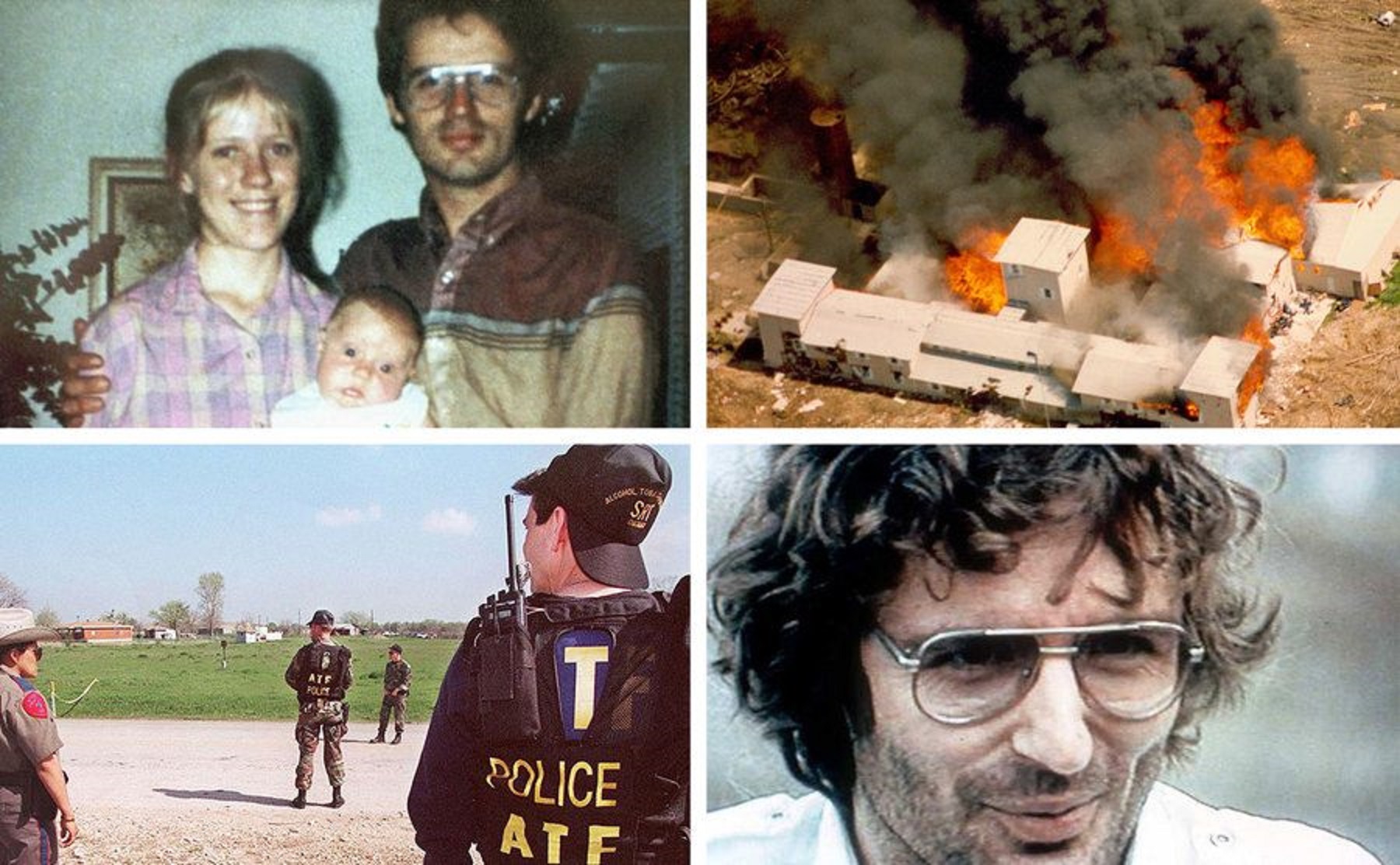
The branch Davidians were something of a spinoff the more main stream group, sevendsay adventism wich started in the late 19th century.
There was an even earlier split- a reform -between the main church and a group called sheperd´s Rod, leadin to the Rod or the Davidians.
The days between february 28 and april 19 ,1993, mark some of the most tragic and bixarre in American history . A series of events led to a standoff between the FBI and members of a religion group that lasted 51 days and took the lives of 86 people . The siege ,which took place in Mont Carmel (just outside Waco, Texas) was a bloddy end to an unforgettable chapter in the Waco story.
Many people remember Waco as a shocking tale about a cult that spawn decades of media coverage of media coverage in books , movies, TV series , songs, and even video games . for those who don´t know much about it -or just want a refresher – this is the story that begins with a man named david koresh.
Koresh had a way with words, he succefullly converted over 100 people and managed to convince them to live in his remote compound at mount carmel center near Waco . but koresh saen´t secluded himself.
He spread his gospel around the world , in Isarel , Australia and Great Britain.koresh was a very controversial figure , mainly because he used his position of power to have multiple wifes and sex with underage girls
world had it that koresh was claiming to be the second coming of chirst, but that was never his message.
The branch davividians were much more radical: the group was born of disappointment over the fact that nothing became of these earlier prophecies. One the original leader died , there was internal strife over who would take over . Koresh ended up winning over the wife and son of the founder.
It should come as no surprise that Koresh was a troubled child from an unstable family. He became a born-again Christian in the 1980s. After joining the Southern Baptist Church, he moved over to a Seventh-Day Adventist Church, that is until he got expelled for aggressively pursuing a pastor’s daughter.
It was then that he was introduced to the Davidians. When Koresh first showed up in 1981, everyone in the group seemed to like him, especially the de-facto head of the organization, Lois Roden.
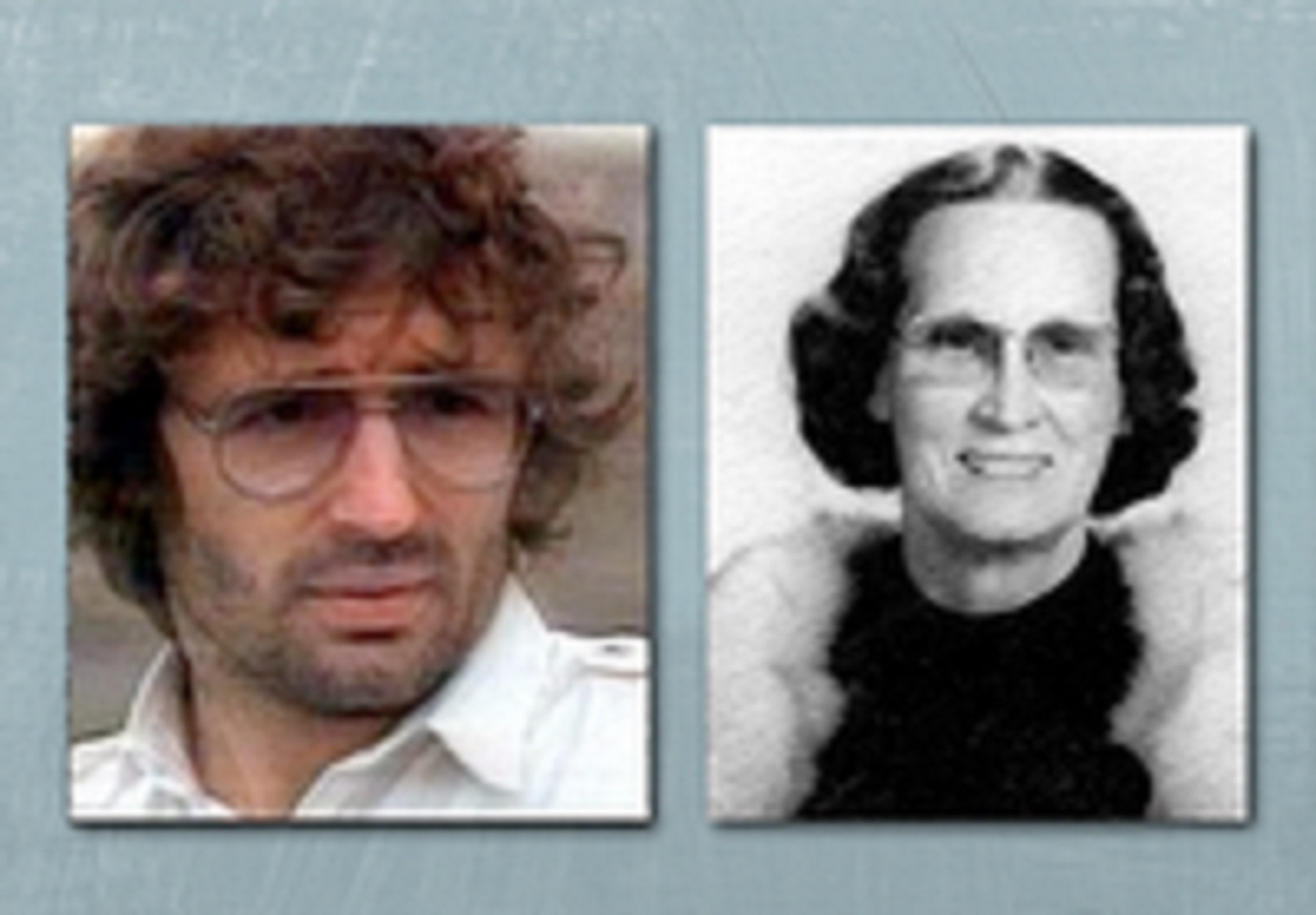
Koresh and Roden had an affair despite their 40-year age gap (he was in his late 20s whereas she was in her late 60s).He wanted to have a child with her, believing he/she would become the Chosen One of their religion.Then, one day, Roden died, and her son George took over. At that point, he and Koresh started butting heads – a classic power struggle. George would challenge Koresh to raise the dead. He went so far as to exhume a corpse to make his point.
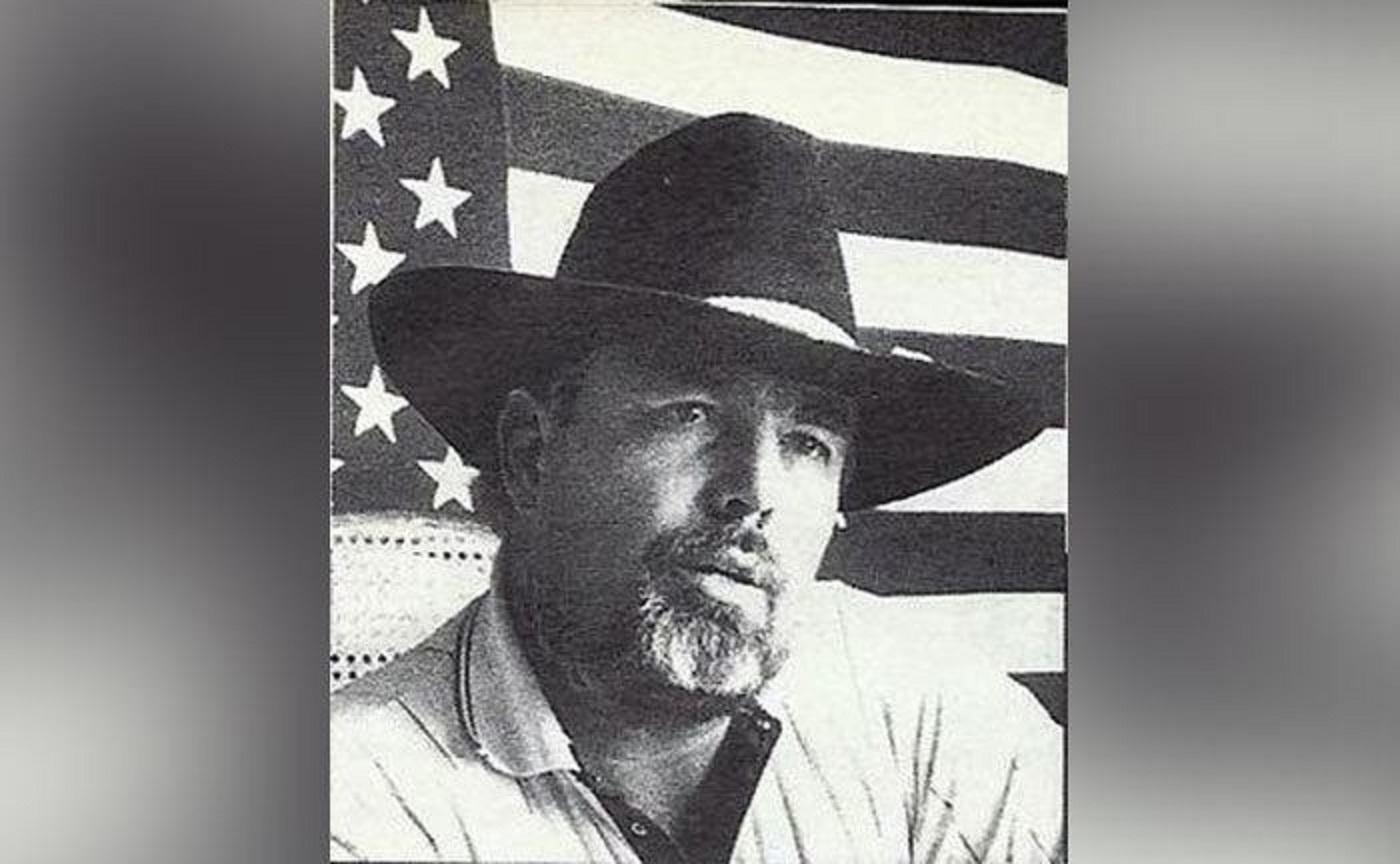
George Roden source:wikimedia commons
Koresh tried pressing charges against George over “robbing the grave ” but the police told him they needed a bit more evidence. The Davidians weren’t just Bible-holding people; they had weapons. A whole lot of weapons.
At one point during his civil war with George, Koresh and seven of his followers raided the compound with five semiautomatic rifles, two rifles, two shotguns, and 400 rounds of ammunition. They said they were trying to collect evidence of illegal activity. It was at this point that Koresh won the war against GeorgeHe based his namne on the hitsorical King david and Cyrus the Great.
( koresh it the hebrew version of Cyrus).
By 1990, koresh started marrrying the wives and daughters of his follower. the fact that some of them were as young as 12 was the reason cited for the FBI´s evenutal raid.
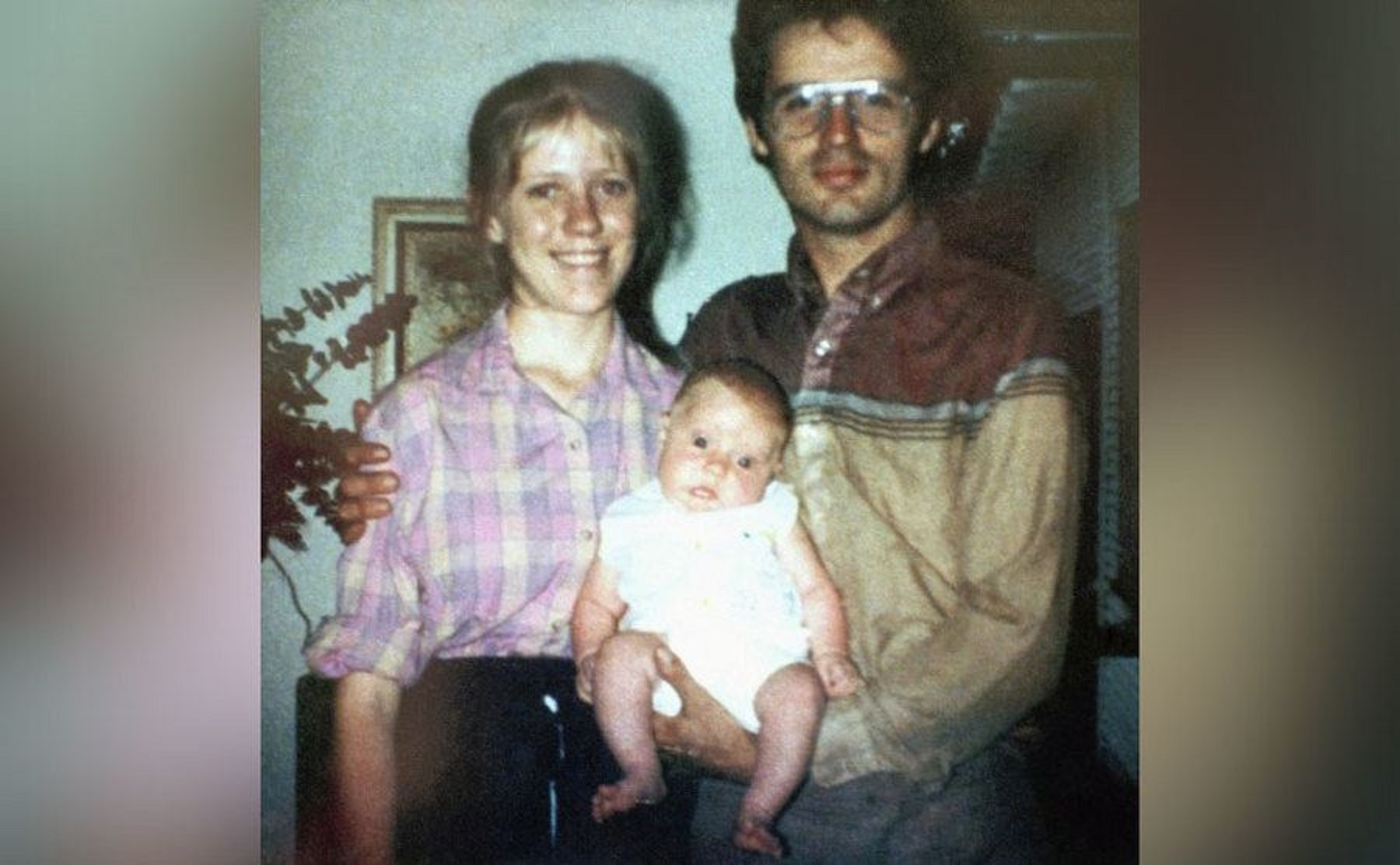
Why would koresh decide to take wives and daughters of his fellow members turned follower? well ,it was an order from God.,he said.
And that meant that he had privileges that others didn´t .The men in the group,for instance ,had to remain celibat.
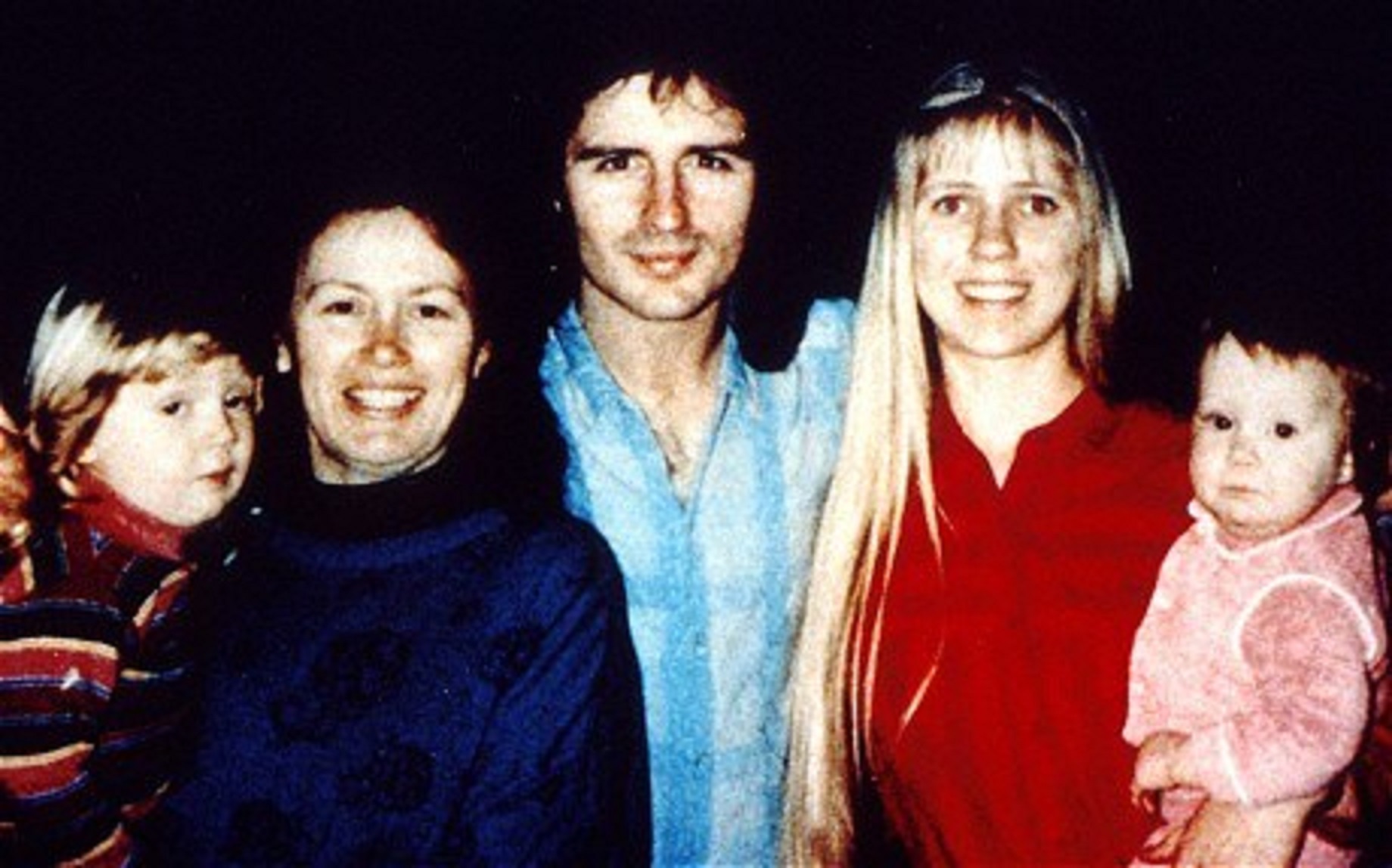
Since Koresh taught that he was the messiah, his children would be sacred. That’s why he had multiple “marriages” (only one of them being actually legal) with women in the community. In the aftermath of the massacre, numerous children who grew up in the group reported that Koresh had molested them.
It came to a point where the Branch Davidians of Waco were inseparable from Koresh. For nine years, he would drill his followers with the belief that Armageddon was coming, and they needed to prepare before the final battle.
The end was coming, he promised them, and it didn’t matter if the “trial by fire” was with automatic weapons or a match and a can of kerosene. Koresh’s first (and only legal) wife, Rachel, along with her parents were some of the followers who stuck around to the bloody end.
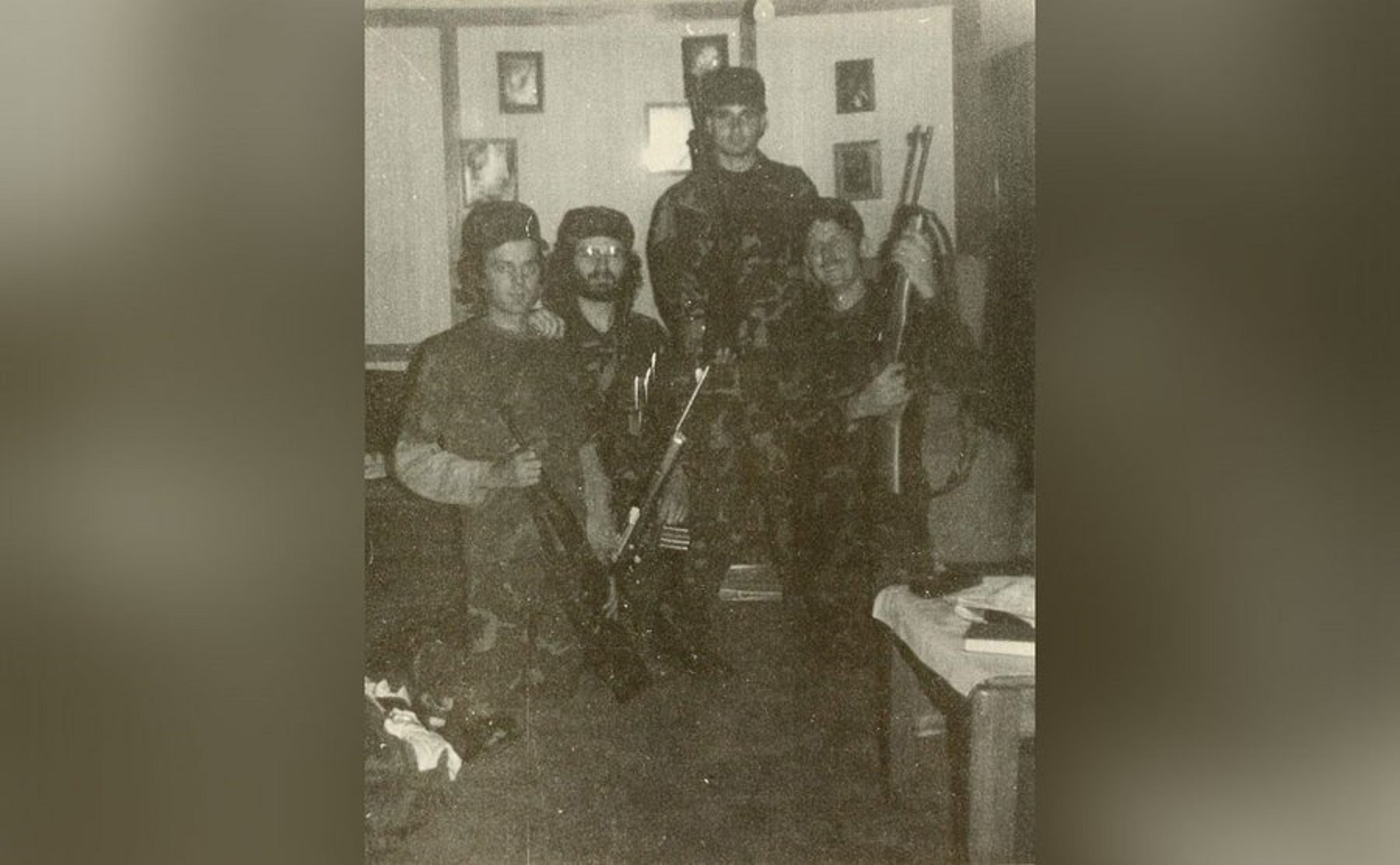
It may seem like the FBI wanted to put an end to the child molestation and overall illegal acts of the group, but at the time of the Waco siege, the only evidence the FBI had was the possession of potential illegal arms on the site.
On February 28, 1993, the ATF (Bureau of Alcohol, Tobacco, Firearms, and Explosives) attempted to raid the Branch Davidian site with a search warrant. What happened next is a quite literally a bloody blur. Both surviving members and FBI agents claimed the other side fired first.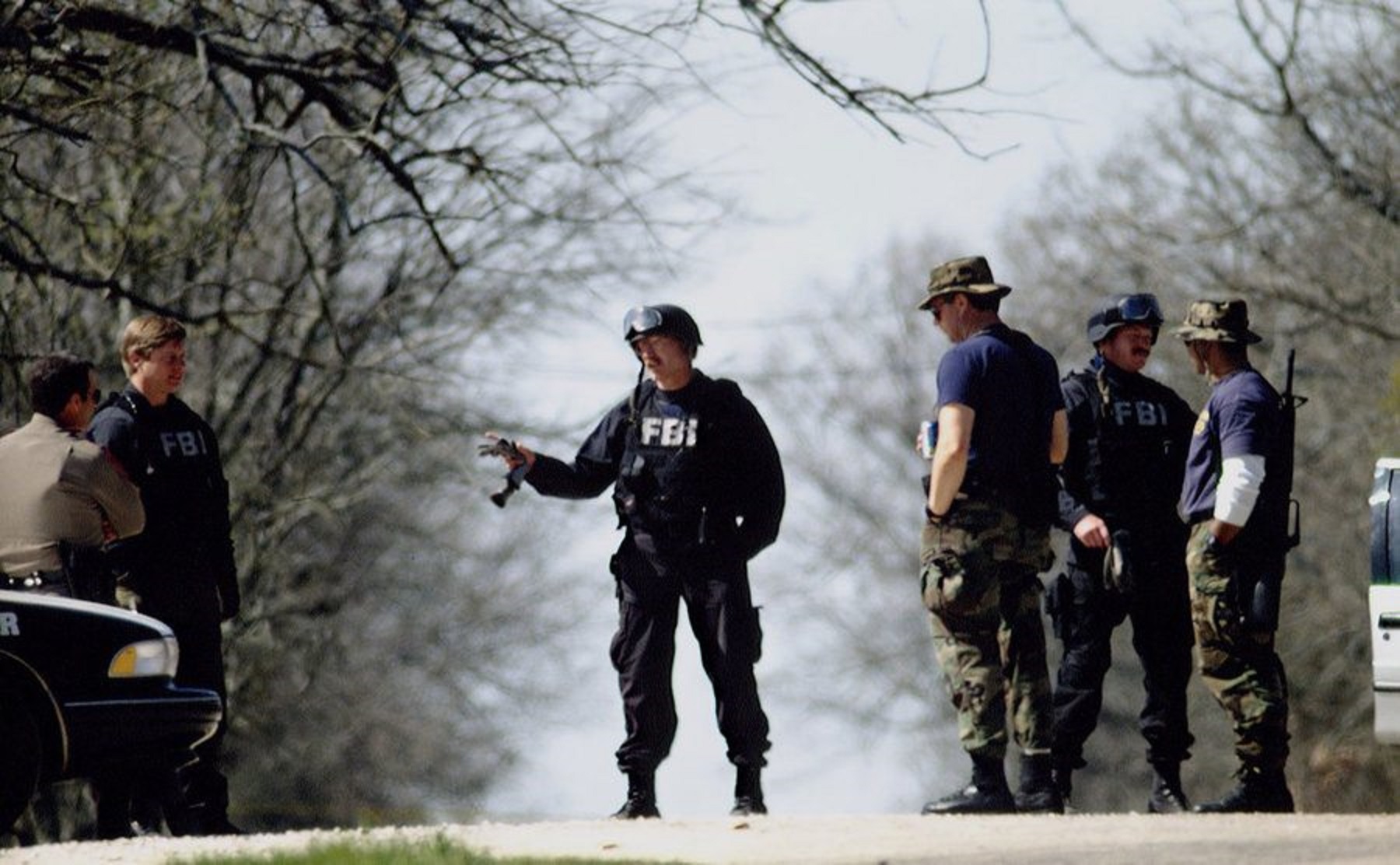
Who’s to blame is a tricky question. What we do know is that the ATF initially obtained a search warrant based on what one postal agent said about what he believed were suspicious deliveries to Mt. Carmel. But none of those deliveries were illegal, despite including 45 AR-15 upper receivers and five M-16 upper receivers
That first raid, headed by the ATF, was codenamed Showtime. The ATF could have picked up Koresh while he was in town but chose to raid the property instead. Thanks to a local newspaper article, the Davidians knew it was coming.
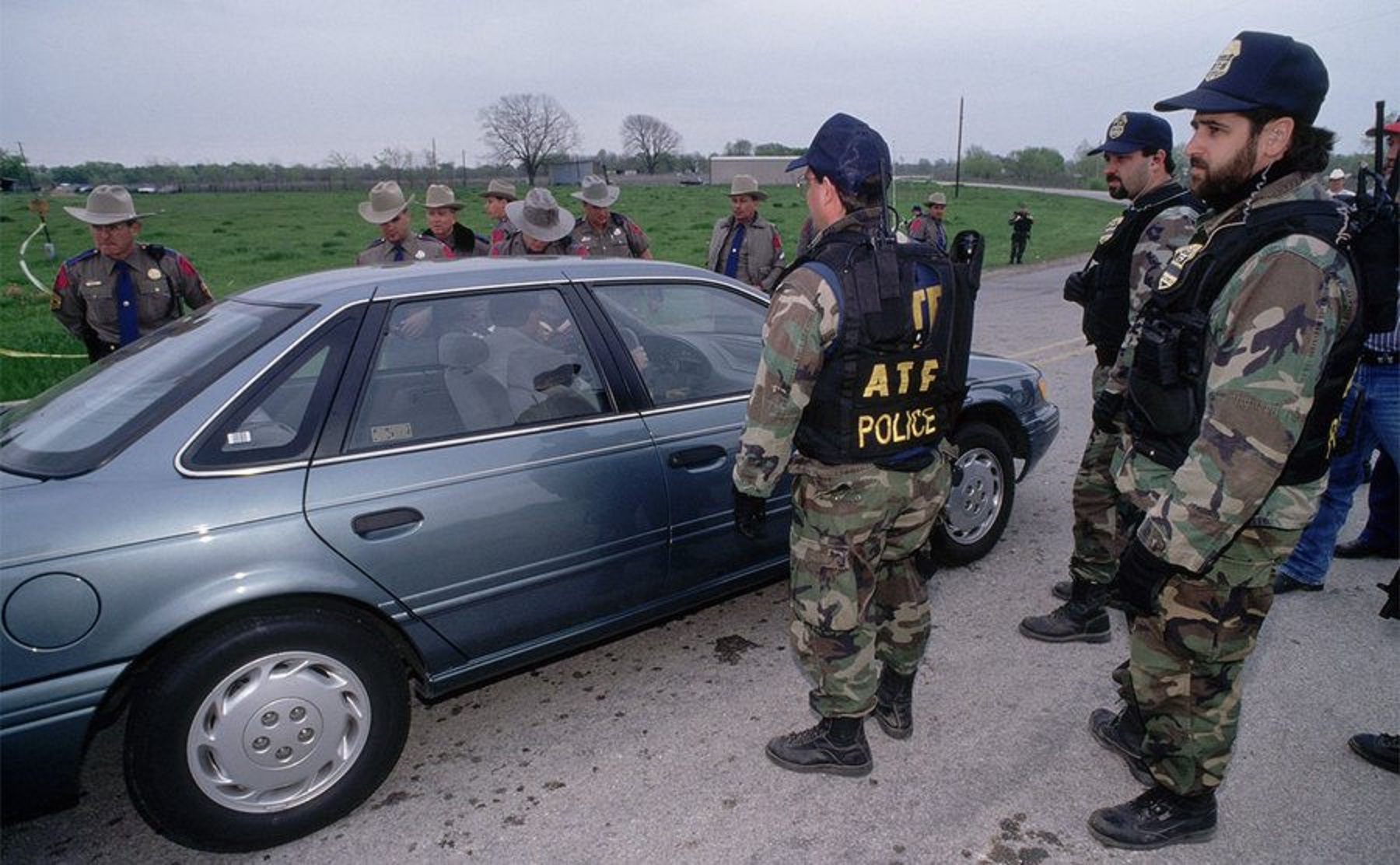
One ATF agent had infiltrated the Davidians and reported that they knew the raid was on and that his cover was blown. What were they doing to prepare? The agent reported that they were praying.
The raid was based mostly on the group’s weaponry, but another factor involved was money – a successful raid would make the ATF look good and thus result in more funding. Part of the motive was to use Waco as a publicity stunt.
Oh, were they wrong.
There is still a debate over who fired first, but there’s lots of evidence pointing to the ATF as the instigators, as they went to shoot the Davidians’ dogs in their kennels while surrounding the compound. There’s also the fact that ATF showed up in a cattle trailer covered by a tarp, wearing no body armor.
They weren’t prepared for an armed confrontation with religious extremists. The horrific gun battle killed five ATF agents and five Davidian members, leaving another 16 agents injured. Now, this was just the beginning.
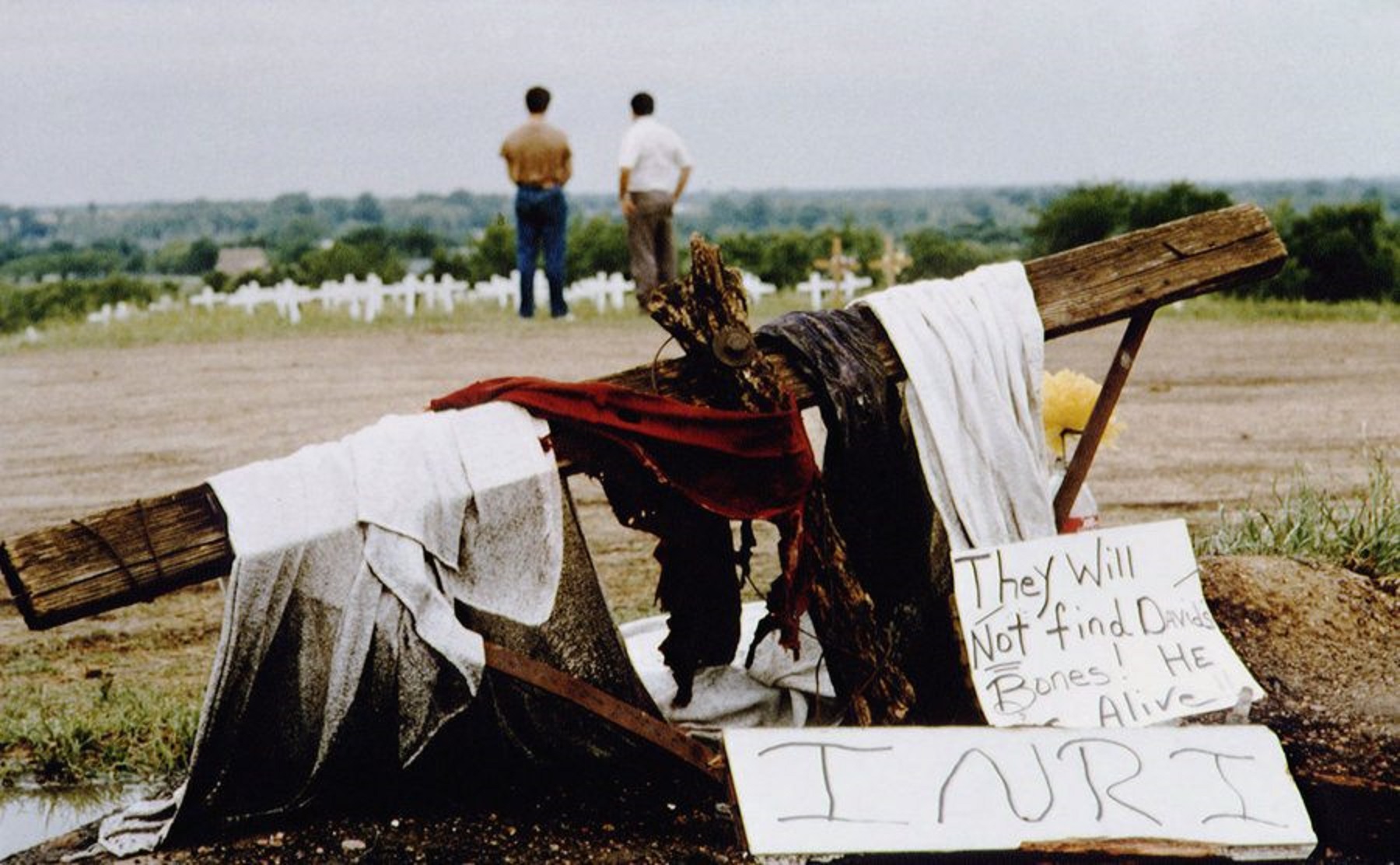
A ceasefire was finally negotiated by local authorities. According to the sheriff, the ATF only withdrew because they were out of ammo. The Davidians honored the ceasefire. “They could’ve killed every ATF agent out there the day of the raid had they kept shooting,” said Jack Harwell, the Sheriff of McLennan County.
“But when they said they would leave their property, they quit shooting. They were highly protective of their property.” What followed was a 51-day standoff between the Branch Davidians and the FBI (they took over from the ATF) – an unprecedented event in American history.

The FBI had all kinds of tricks up their sleeves to break into the compound, one of them was playing agonizingly loud music 24/7 on large speakers – a way to induce sleep deprivation in members. The FBI also spent 60 hours negotiating with Koresh, trying to gain access to the site.
Get this, the FBI brought:
12 tanks, four combat-engineering vehicles
668 agents, six Customs officers,
15 Army personnel,
13 members of the Texas National Guard,
31 Texas Rangers.
131 officers from the Texas Department of Public Safety,
17 from the McLennan County sheriff’s office, and 18 Waco police.
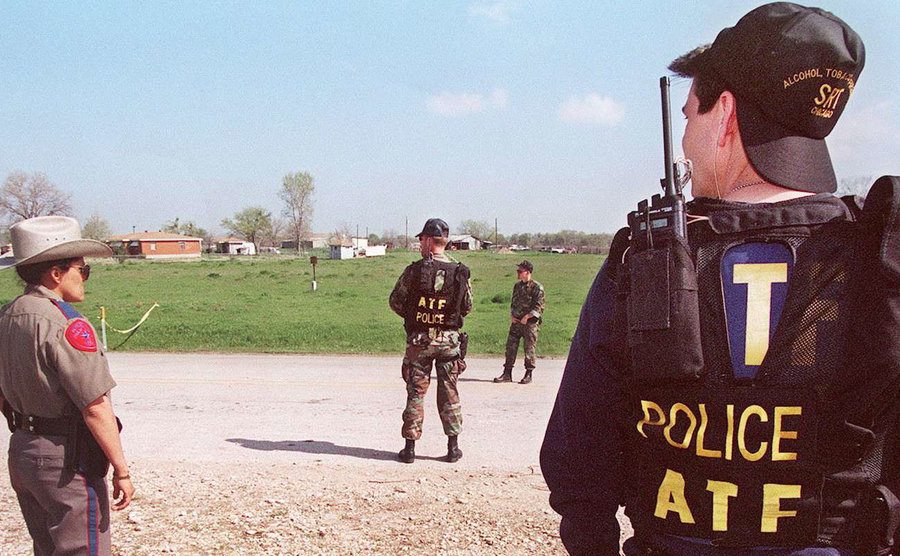
They assembled the largest military force in American history ever gathered against civilian suspects. In total, there were 899 people on the side of the FBI. The Davidians had an “army” of 85. And still, no one was prepared for what was about to go down.
On April 19, the last day of the standoff, the FBI raided the compound, and the Waco siege came to an end. With weapons and tear gas, the feds stormed the place. A fire subsequently broke out, causing 76 of the 85 Davidians, including Koresh and many children, to be killed.
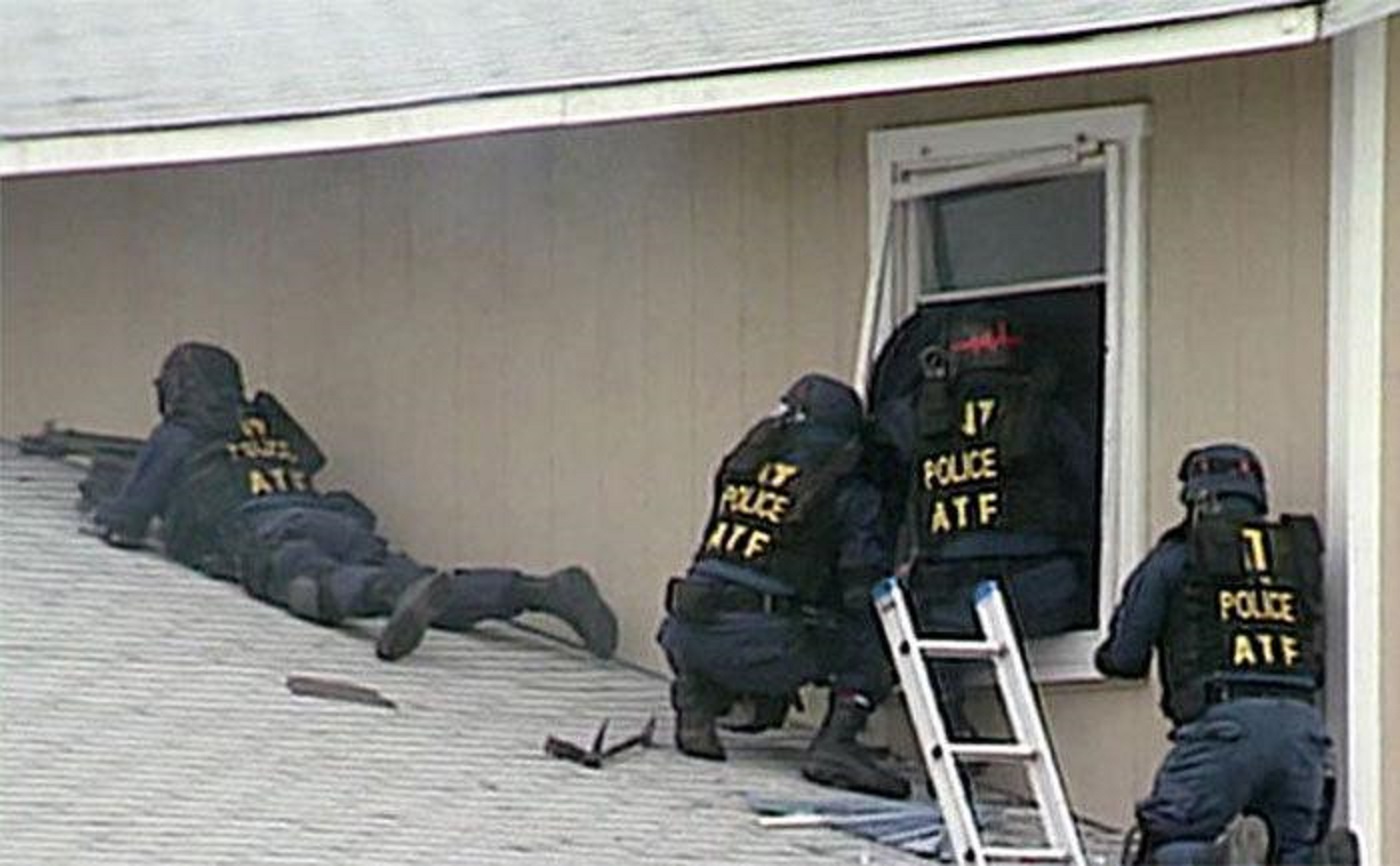
Ironically, the final standoff involved no shots being fired. But there was hostility and aggression coming in all forms, up until the fire broke out. There were all kinds of noises – rabbits being slaughtered, jet planes flying above, loud music being played, and other disturbing sounds.
There were threatening tank movements, tear gas, and flash bang grenades. The feds were flipping the bird or mooning the Davidians frequently. The tanks were crushing the compound’s outer perimeter, the buildings, and private vehicles. One tank repeatedly rolled over the grave of Branch Davidian Peter Gent.
The tear gas used by the FBI was military grade, meaning it turns toxic very quickly. The feds were also aware that kids, even infants, were on the compound and were too small to wear gas masks. But they shot the grenades in anyway. Any suffering of children was seen as acceptable collateral damage.
Things grew increasingly aggressive leading up to the final fire, and Koresh grew concerned for their safety. 11 people left the Davidian compound, and all of them were arrested as material witnesses, one was indicted for conspiracy to commit murder.
In hindsight, the children should have left, too, but they were unwilling to leave Koresh’s side. Hearing that the other kids who previously left were then separated from their mothers made them even more reluctant to leave.
Eventually, communication between the FBI and Koresh began to break down. The feds considered using snipers to take him and other leaders of the movement out but feared a mass suicide. As the 51-day standoff was going down, Koresh and his followers watched the news, seeing what the ATF and federal agents were publicly reporting. Apparently, the public narrative didn’t line up with the group’s experience
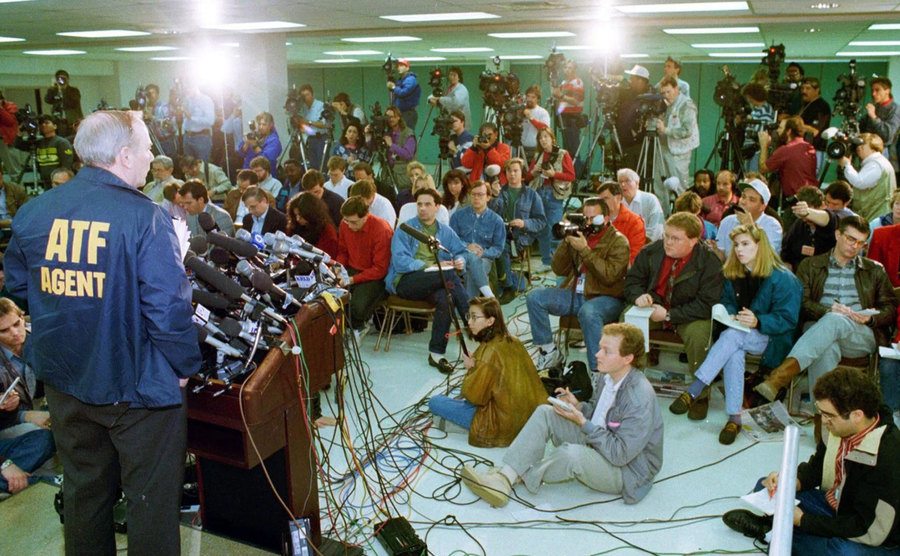
Here’s an excerpt of a conversation between Koresh and an ATF negotiator named Jim Cavanaugh.
Cavanaugh: “Well, I think we need to set the record straight, and that is that there was no guns on those helicopters.”
Koresh: “Now Jim, you’re a damn liar. Now let’s get real.”
Cavanaugh: “David, I . . .”
Koresh: “No! You listen to me! You’re sittin’ there and tellin’ me that there were no guns on that helicopter!?”
Cavanaugh: “I said they didn’t shoot. There’s no guns on . . .”
Koresh: “You are a damn liar!”
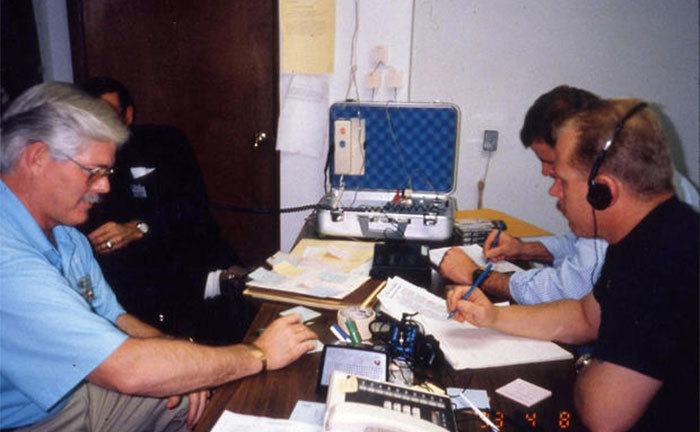
The FBI Hostage Rescue Team, mockingly dubbed the “Hostage Roasting Team,” arrived at the raid with 50 caliber rifles and punched holes into the walls of the building with explosives. They were about to pump poison gas into the building that had small children and infants inside.
The feds’ plan was to announce to the group that they weren’t planning on taking over by force while at the same pumping more and more gas inside to put pressure on them to leave. On that final day, April 19, the fires began around noon.
The FBI has maintained that the fires were started deliberately by the Davidians, while some of the group’s survivors claimed it was the FBI that started the fires, whether intentionally or not. There is footage of the Davidians talking about how they made Molotov cocktails to fight back the FBI.
Nine people left the building during the fire; the rest who remained inside, died either from fire, smoke inhalation, getting shot, or were buried alive by rubble. There were also signs of death by cyanide poisoning. At the end of the day, there were 76 deaths that resulted from that day.
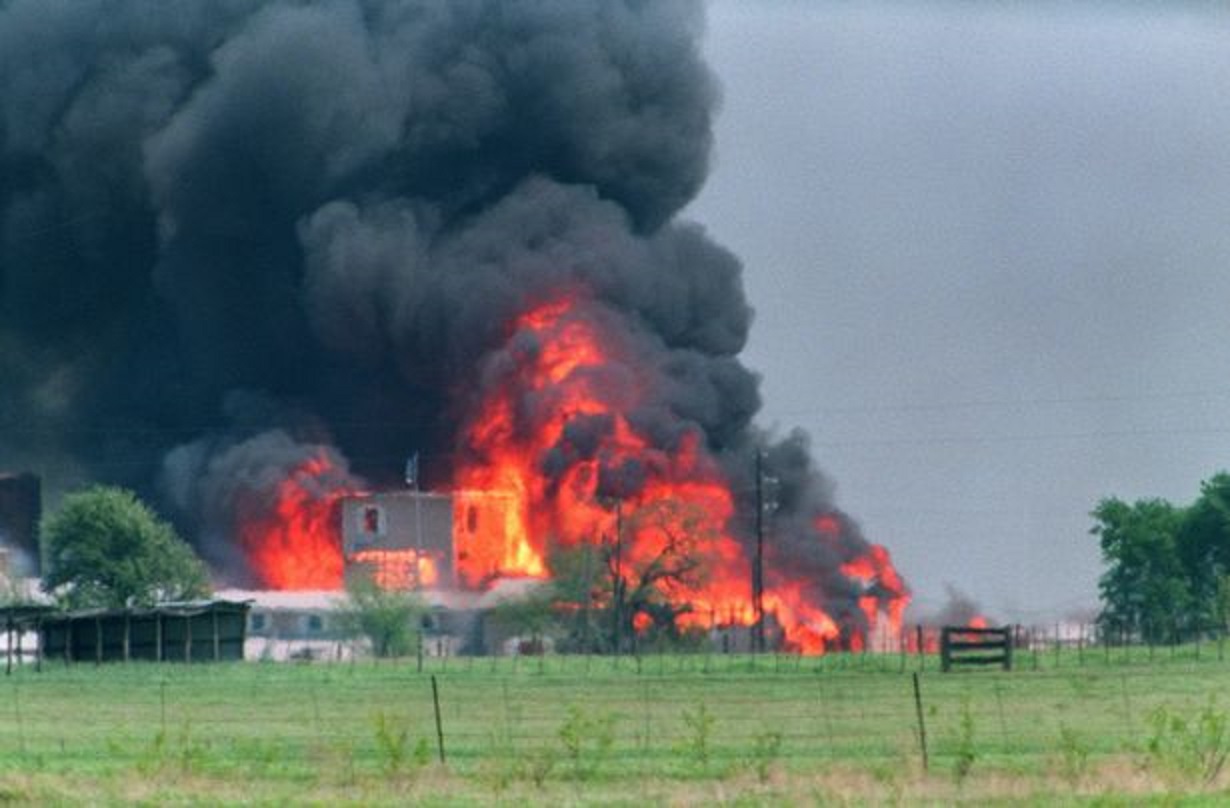
Despite the fact that the FBI claimed never having fired a single shot during the 51-day standoff, there were 27 Davidians who died of bullet wounds. This meant that either those wounds were self-inflicted or that the FBI was lying
It’s been nearly 30 years since the Waco siege and the only building on the site today is a small chapel, which was erected years later. The Waco chapter became something that the authorities could learn from. For instance, the new head of the ATF, John Magaw, made sure the Treasury Department’s Blue Book report on the matter was required reading for incoming agents.
The Nine Davidians who left during the fire – the only survivors – all received sentences of up to 40 years for charges such as voluntary manslaughter and weapons possession. There were other Davidians, including foreign nationals, who were sent to prison indefinitely as material witnesses.
The aftermath of the siege saw Davidian members and their surviving families bringing over 100 civil suits against the government. Most of them, however, were dismissed before a jury was ever formed. In the cases that did go to trial, the Davidians were almost always ruled against.
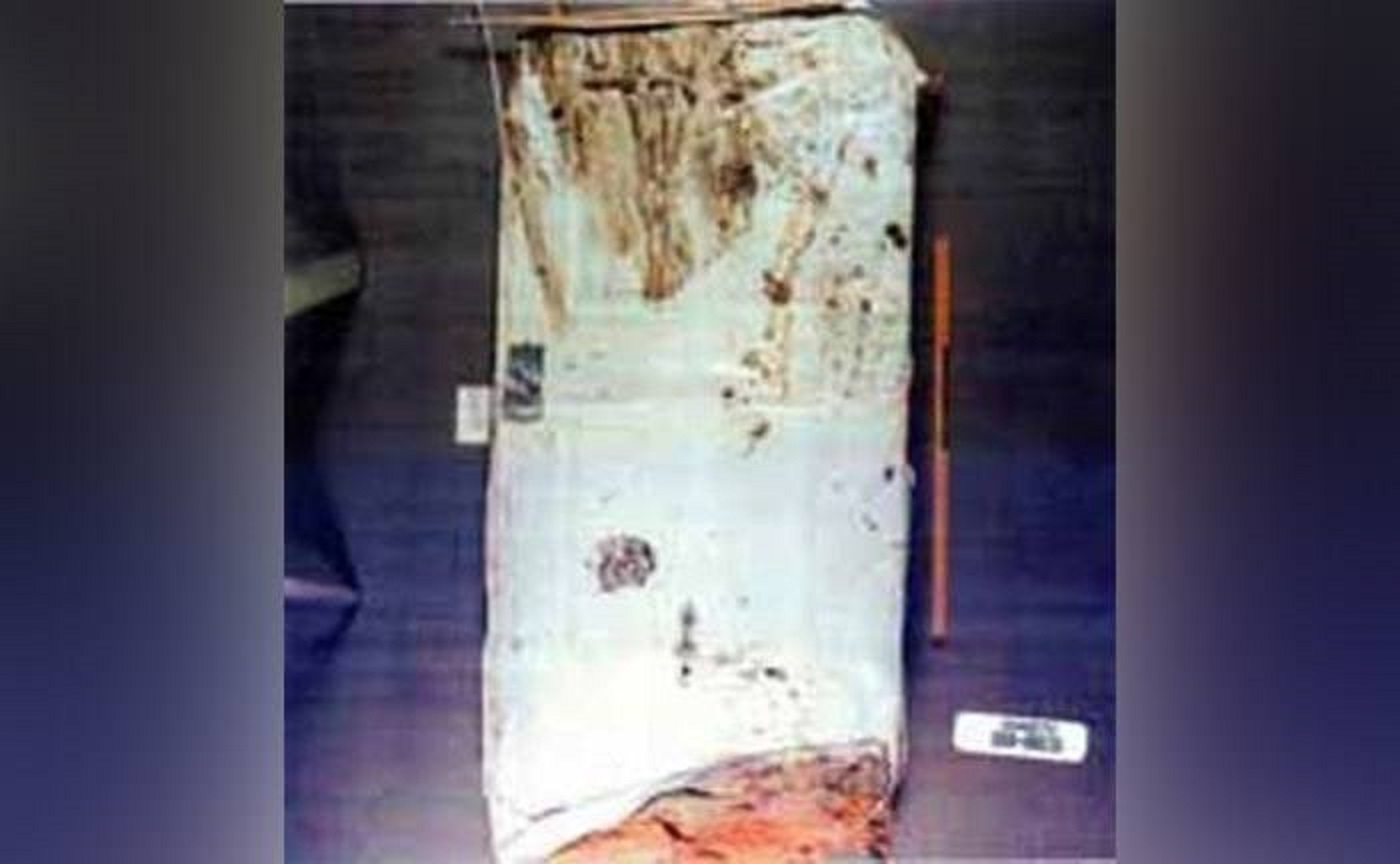
There was one case, though, in which a jury in San Antonio acquitted the Davidians in the killing of four ATF agents; it was self defense. There was a major piece of evidence that would prove the FBI shot first, but that evidence was “lost.”
The right-hand entry door to the compound’s building showed only incoming bullet holes in it, meaning the shots came from outside. In court, a Texas state trooper testified that he saw two men loading into a U-Haul what looked like that door.
The Davidians argued that the condition of the left-hand door, which was intact, meant the other door was never destroyed in the fire, rather it was “lost” on purpose. But the door wasn’t the only thing that mysteriously went missing.
The ATF’s footage of the original raid was another piece of evidence that mysteriously got lost. The siege was overall a tragic chapter in American history, but it’s not so easy to point the finger at who’s to blame. It’s clear that both sides did wrong, or “sinned” if you prefer.
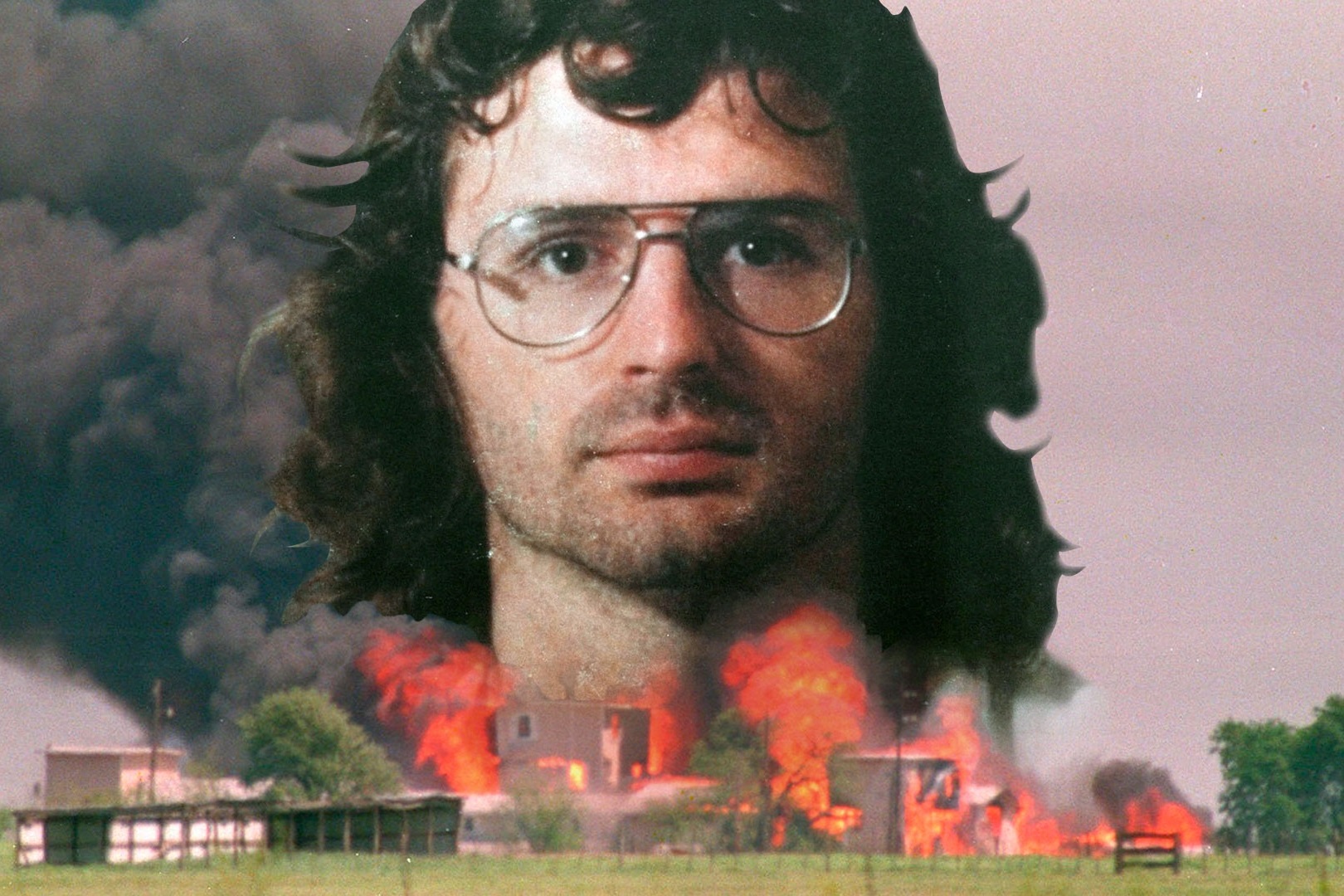
David Koresh,, was the charismatic leader of the branch davidians taking over in 1987 after the death of the group´s predecssor, according to FBI records.
david koresh was born vernon wayne howell to an uinwed teeange mother named bonnie clark, on August 17, 1959, in houston.
He did not meet his father until his teenage years, and clark left him to be raised by his grandfather during his early years.
koresh struggled in school ,due , in part , to severe dyslexia and poor eyesight . He was placed in special education classes and mocked by his classmates with th nicknamn “Vernie” . wich he despided.
He spent much of his lonely childhood playing musical instruments and studying the Bible, which developed into an obsessive interest for Koresh. By age 12, he had memorized and interpreted the entire New Testament. Koresh became a born-again Christian at a Southern Baptist Church but disagreed with their teachings and joined the Seventh-Day Adventist Church, instead. He was seen as overbearing by other congregants, constantly attempting to convert them to his interpretations of religion.
Koresh was eventually expelled from the church after telling the pastor that God wanted Koresh to take the pastor’s 12-year-old daughter as his wife. Koresh dropped out of Garland High School in his senior year to take a carpentry job. While in his early 20s, he spent a short time in Los Angeles trying to make it as a rock star.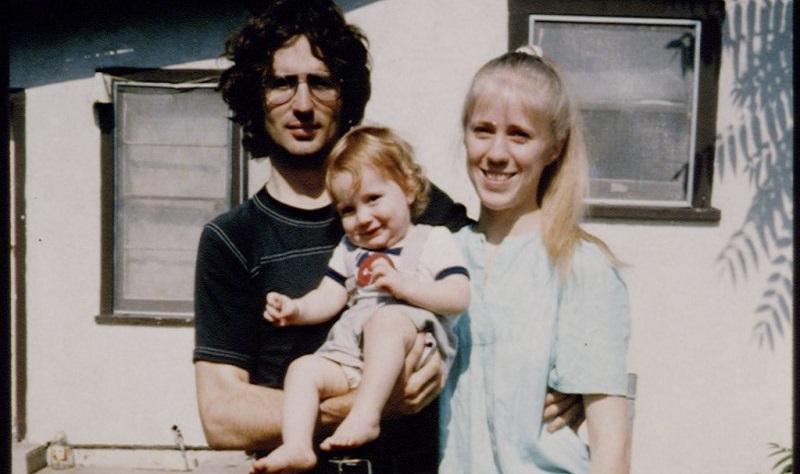
David Koresh with his wife, Rachel, and their son, Cyrus, in front of their house in 1986. In the early 1980s, Koresh, then still known as Vernon Howell, moved to Waco, Texas, and joined the Branch Davidians, a splinter group from the Seventh-Day Adventist Church.
Lois Roden, the widow of Branch Davidians founder Benjamin Roden, encouraged Koresh to play guitar and sing during the group’s daily bible study sessions at the Mount Carmel Center. In his book The Devil’s Party, Colin Wilson claimed Koresh had an affair with Lois and that Koresh claimed God wanted him to father a child with her, who he said would become the “Chosen One.”
In 1984, Koresh married a 14-year-old Branch Davidian named Rachel Jones, with whom he would have two children: Cyrus and Starr. He had began teaching his own biblical interpretations in lectures called “The Serpent’s Root,” which caused unrest among the group. A leadership dispute began between Koresh and George Roden, Benjamin’s son, who had been expected to take over the sect and clashed with Koresh. The feud reached a boiling point after Roden accused Koresh of setting a fire that destroyed an administration building and press; Koresh claimed the fire was a “judgement of God” upon the sect.
Roden seemed to win the leadership dispute after he and his supporters drove Koresh out of the Mount Carmel Center at gunpoint. Koresh and his followers resided in eastern Texas for a while, living under difficult conditions. He began recruiting other new followers and visited Israel, where he claimed to have a vision revealing he was the modern-day incarnation of the prophet Cyrus, who liberated the Jews from Babylon. In 1987, Koresh and a handful of his devotees returned to Waco, heavily armed.
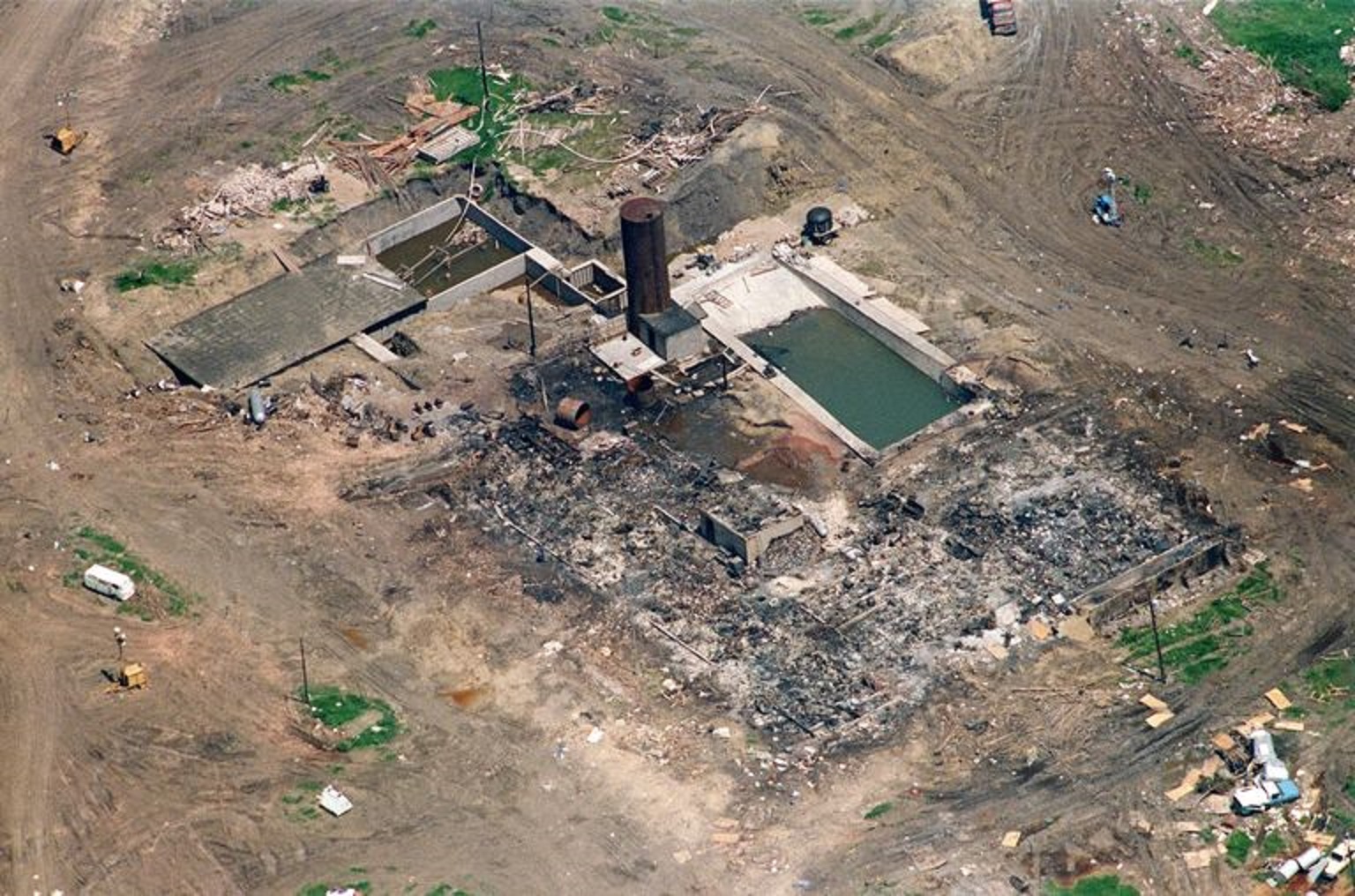
An aerial shot of the branch davidian compound, taken on April 21, 1993, after it was destroyed by a f ire .
A gunfight broke out, and Roden was shot but survived the injury. Koresh and his crew were tried for attempted murder, but Koresh received a mistrial, and his followers were acquitted. Roden was later arrested for the 1989 murder of Wayman Dale Adair, whom Roden claimed Koresh had sent to kill him. With Roden out of the way, Koresh was able to reclaim the Mount Carmel Center and become the Branch Davidians’ leader.
In 1990, he legally changed his name from Vernon Howell to David Koresh; his new first name was a reference to King David, while his last name was Cyrus’ biblical name. Koresh’s teachings included the practice of “spiritual weddings,” which enabled him to bed God-chosen female followers of all ages. Koresh was said to have had as many as 20 “wives,” some of whom were under the age of 17 (Texas’ legal age of consent), and to have fathered at least a dozen children with members other than his legal wife.
As leader of the Branch Davidians, Koresh claimed he had cracked the code of the Seven Seals in the Book of Revelation, which predicted events leading to the Apocalypse. He told his followers that the Lord willed the Davidians to build an “Army of God.” As a result, they started stockpiling weapons. Other Branch Davidians claimed the weapons were not meant for defense but rather were sold at gun shows to generate revenue for the sect.
Koresh released some of the children from the compound in exchange for the FBI playing recorded messages by Koresh on the radio. At one point, Koresh agreed to surrender himself and allow the rest of his followers to exit the compound peacefully, but he later changed his mind, with one of his followers saying “God had told Koresh to wait.”
According to the FBI, Koresh claimed to be Christ during the negotiations, and he repeatedly went on rambling sermons during their phone calls. He also reportedly used the children inside the Mount Carmel Center as a shield against FBI attempts to resolve the standoff.
A total of 35 people were released from the compound during the first half of the siege, including 21 children. Conflicts soon arose within the FBI, with some supporting continued negotiations and others advocating for more aggressive action. No other Branch Davidians left the center during the second half of the siege.
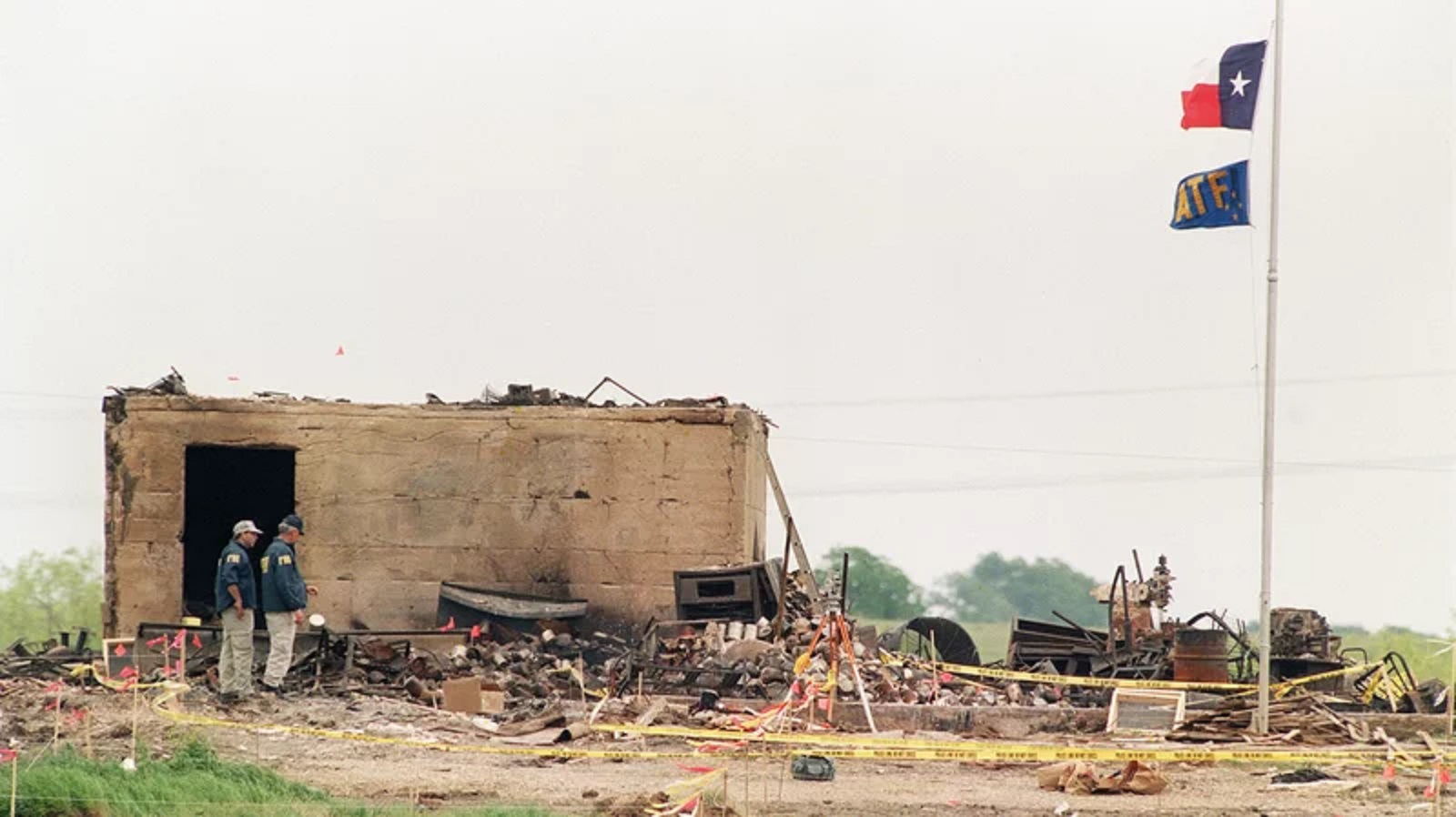
The Texas and the ATF flags fly at half staff April 23, 1993, over the only structure left standing after a fire destroyed the the Branch Davidian compound in Waco, Texas on April 19.J. David Ake/AFP via Getty Images
The Waco siege ended with a fatal fire at the Mount Carmel Center near Waco, Texas
On April 19, 1993, the Federal Bureau of Investigation launched a tank and tear gas assault on Mount Carmel. Hours later, fires spread throughout the compound, killing more than six dozen inhabitants. Koresh was among those found dead from an apparently self-inflicted gunshot wound to the head. Some speculated that the FBI purposely set the fire, but a special commission later analyzed recordings from FBI microphones that captured Koresh and other Branch Davidians discussing plans to intentionally set the fires themselves.
The siege at Waco that ended with Koresh’s death has been an enduring fascination among the American public and for decades has continued to inspire anti-government sentiment among militia movements and far-right organizations. Timothy McVeigh and Terry Nichols said the Waco incident was a motivating factor in their bombing of a federal government building on Oklahoma City on 1995, which killed 168 people and injured hundreds more.
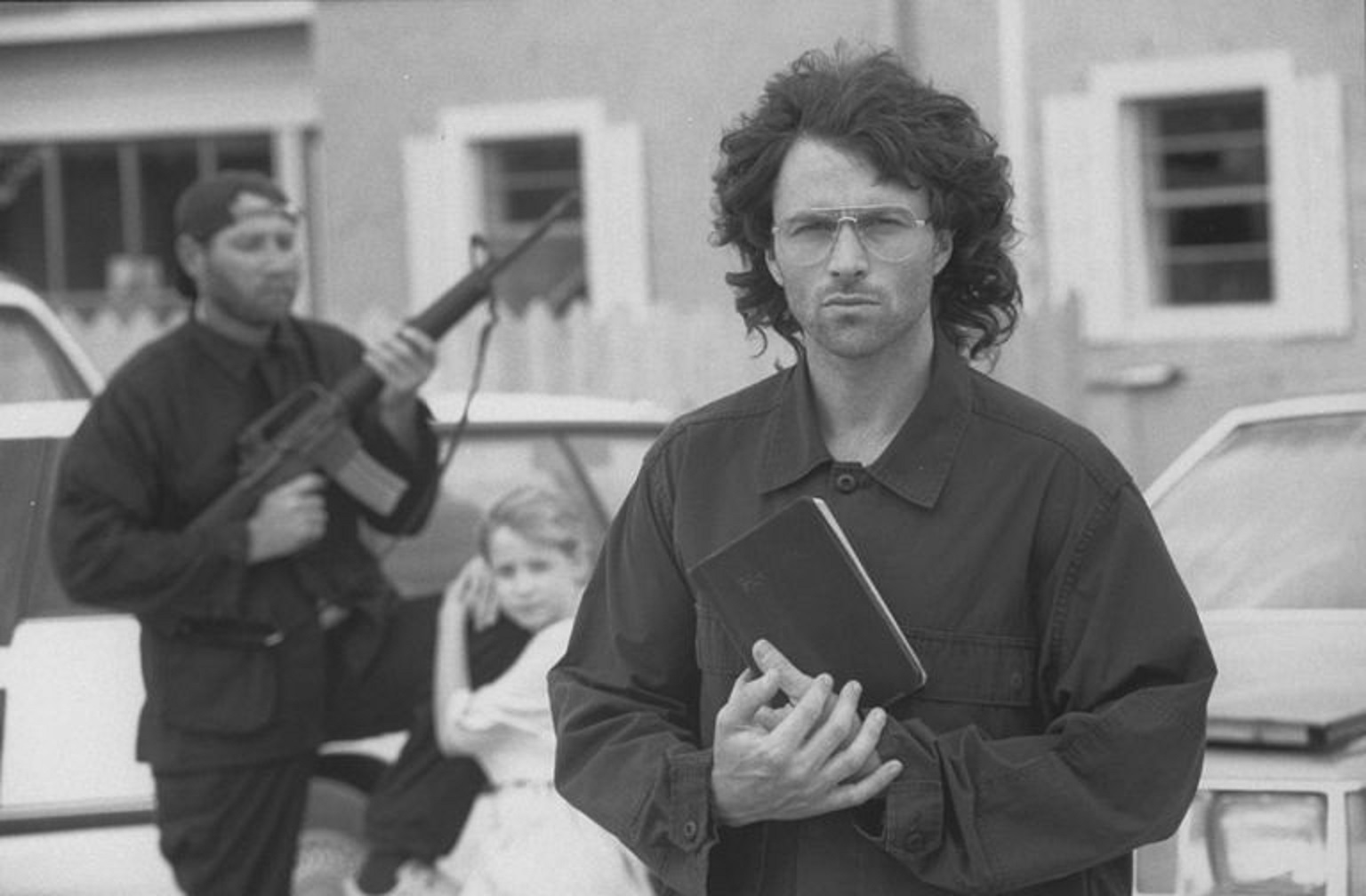
Actor Tim Daly portrayed David Koresh in the TV movie In the Line of Duty: Ambush at Waco (1993).
The Waco siege also has been the subject of several books, documentaries, and dramatizations over the years. Tim Daly portrayed Koresh in the made-for-television film In the Line of Duty: Ambush in Waco (1993). The 2018 television miniseries Waco featured Taylor Kitsch as David Koresh, with a cast that also included Michael Shannon, Andrea Riseborough, Rory Colkin, and Julia Garner.
A sequel series called Waco: The Aftermath will premiere on April 14, 2023, on Showtime. Waco: American Apocalypse, a three-part Netflix docuseries, was released on March 22, 2023, marking the 30th anniversary of the deadly siege.
Militia groups have long used Waco as a rallying cry. But it was never the example of whiteness under siege that they invoke.
David Koresh “may have been a false prophet, but he was onto something,” the current pastor of the Branch Davidians recently remarked at his congregation’s compound near Waco, Texas.
“That’s why the Clintons couldn’t let him live. He knew too much about the human trafficking, pedophilia, and gun- and cocaine-running the Clintons and Bushes were guilty of.”
In this diatribe, and in the many screeds he has written for his church’s website, Pastor Charles Pace explicitly connected the 1993 Waco siege—which killed 82 Davidians, including Koresh—with our paranoid present.
